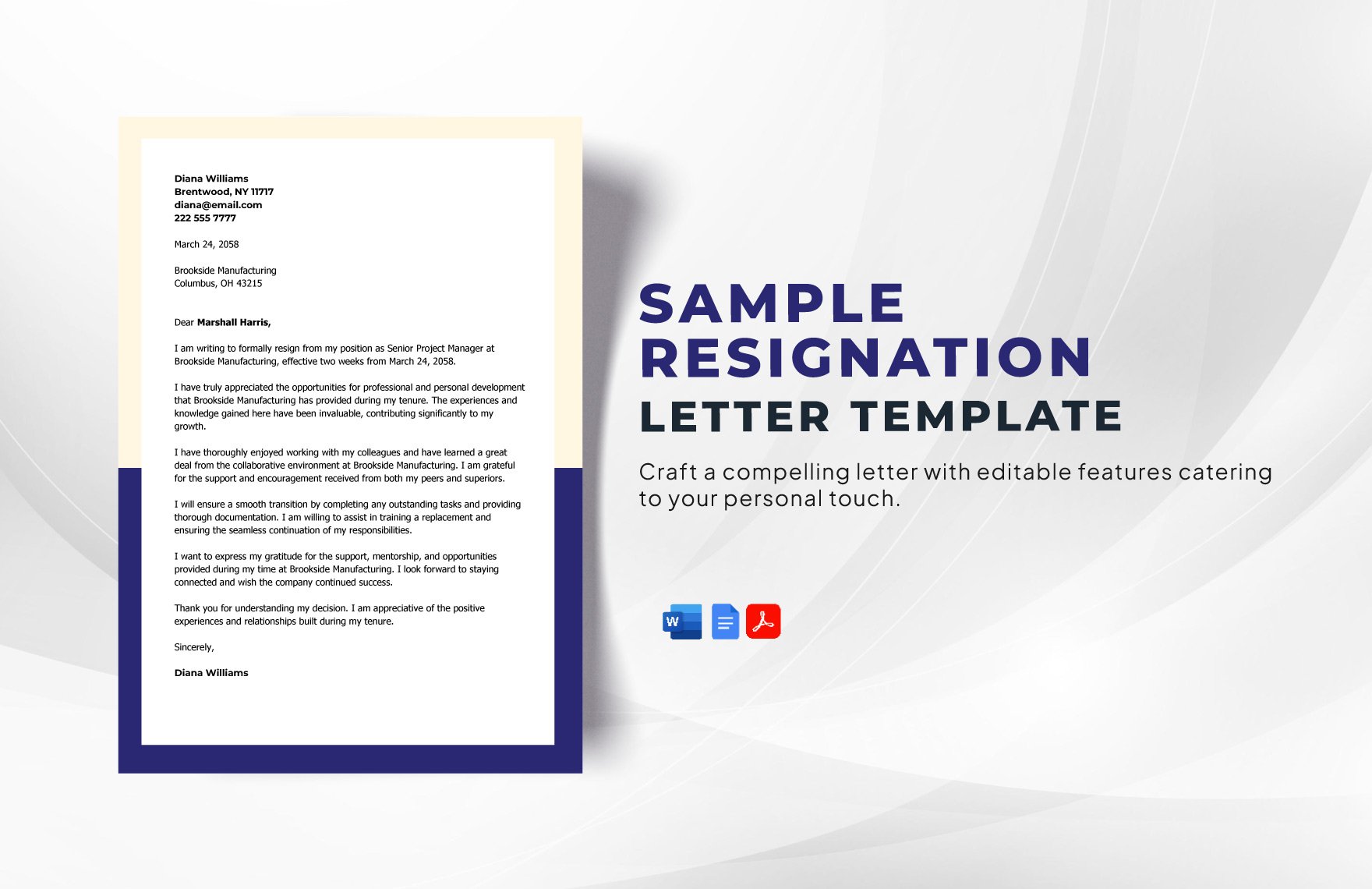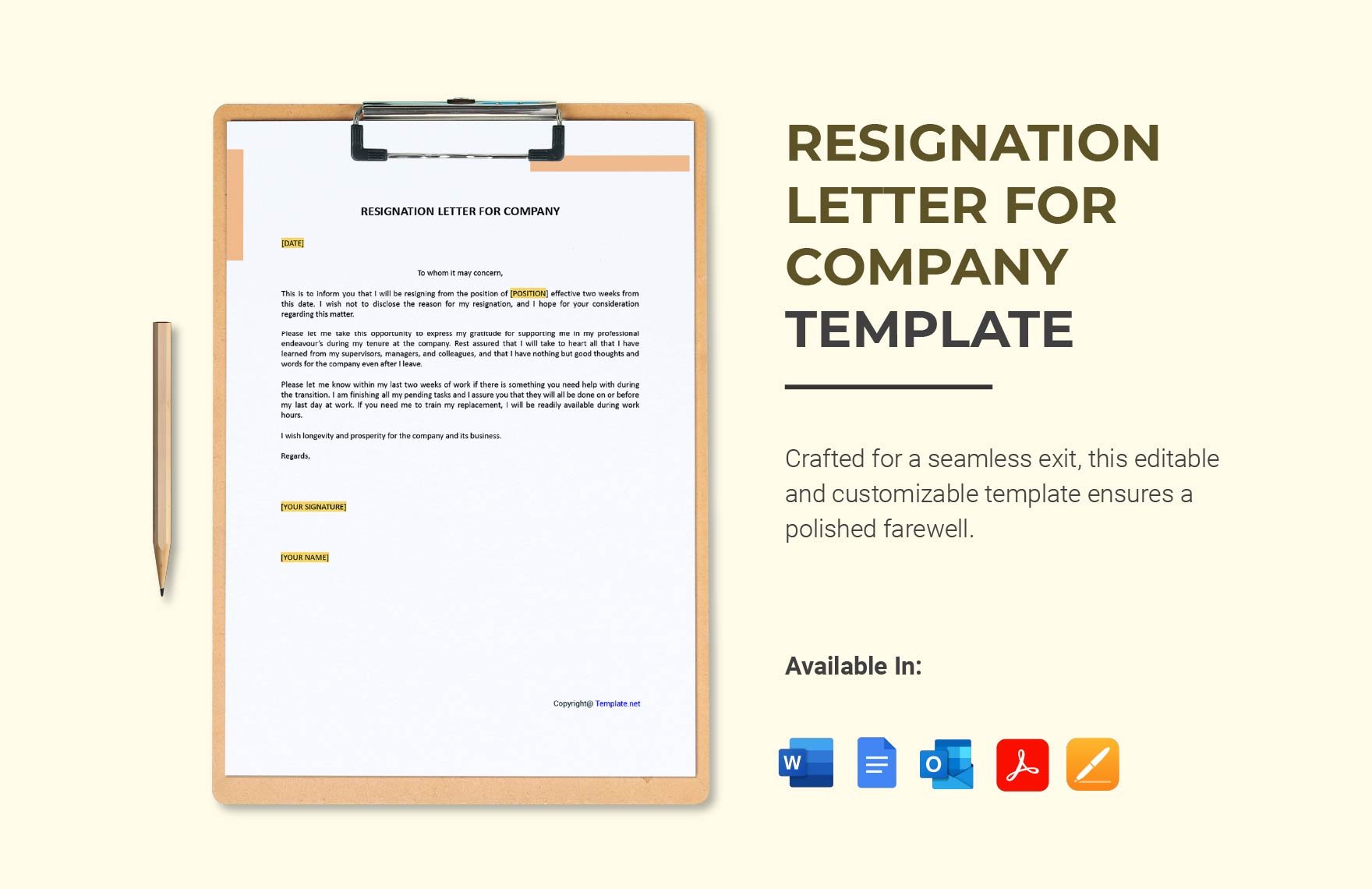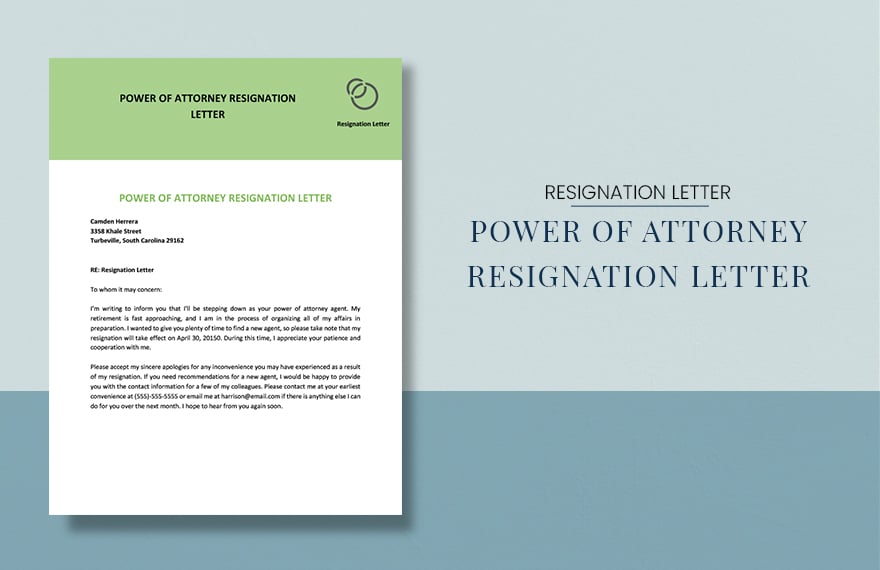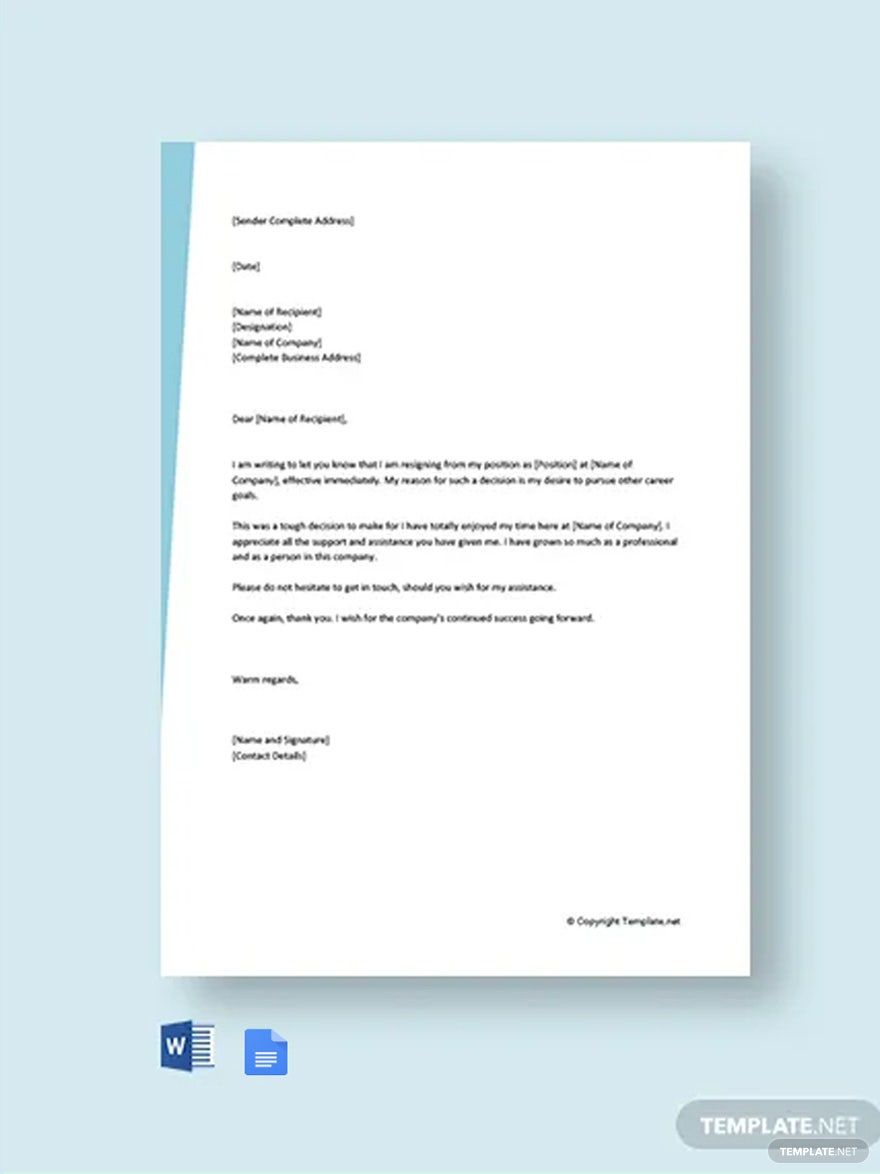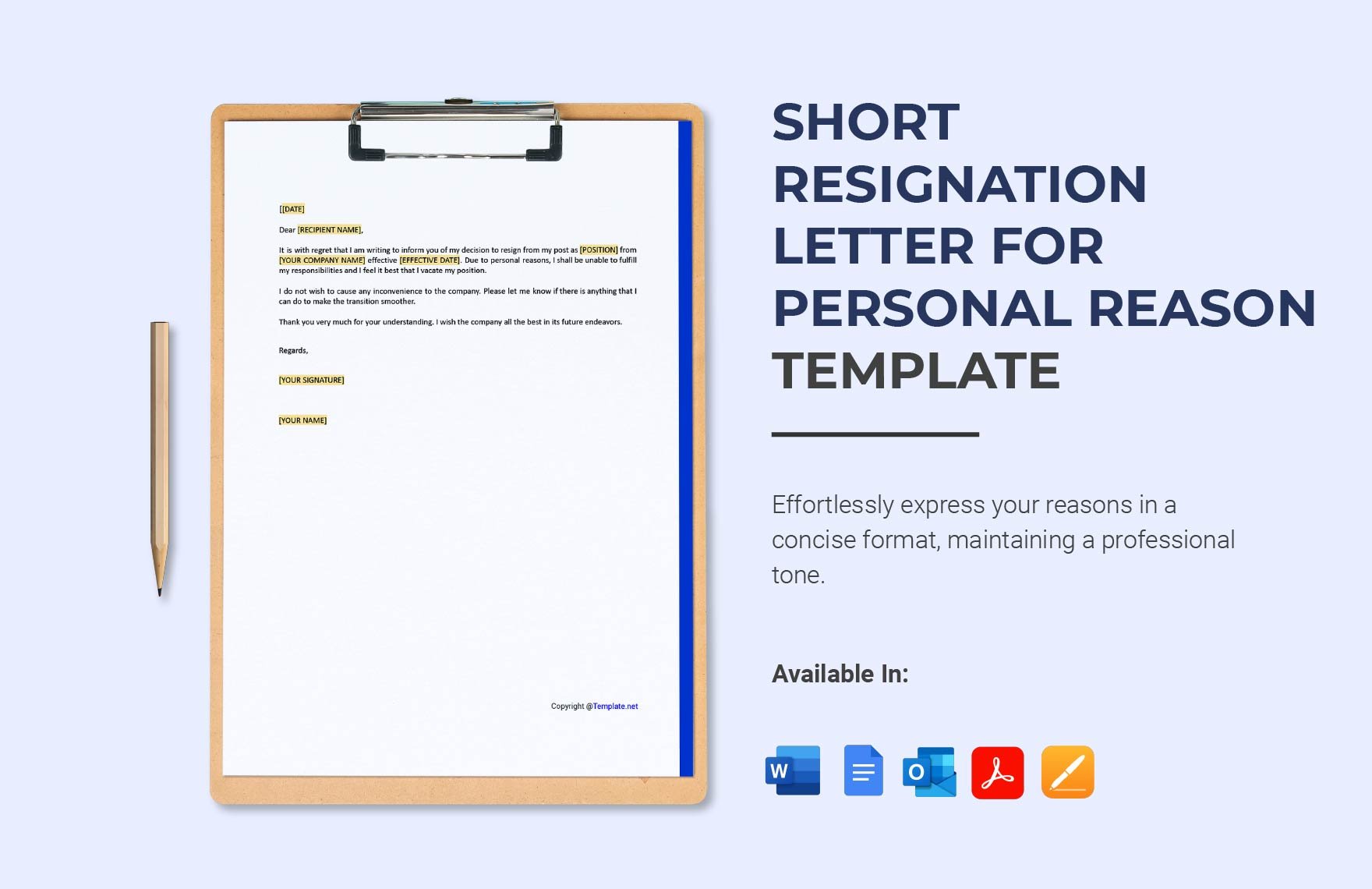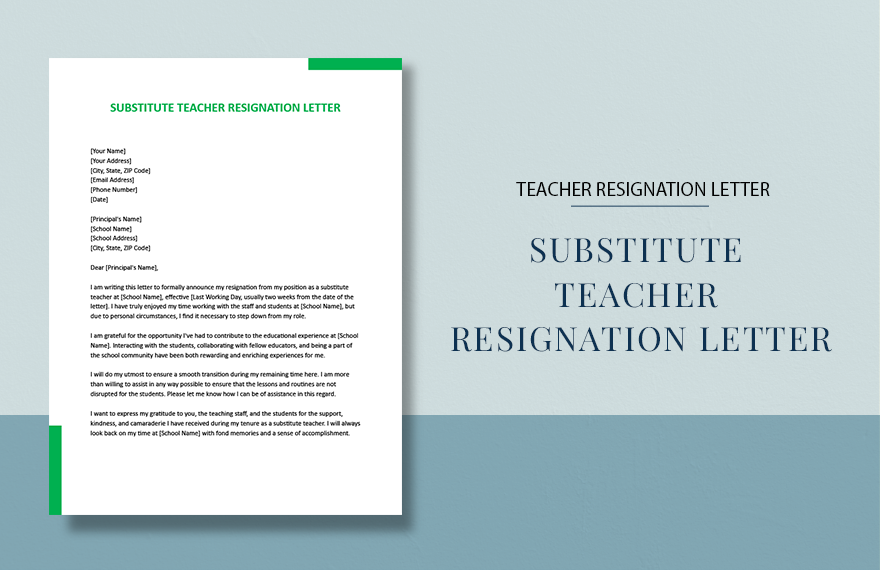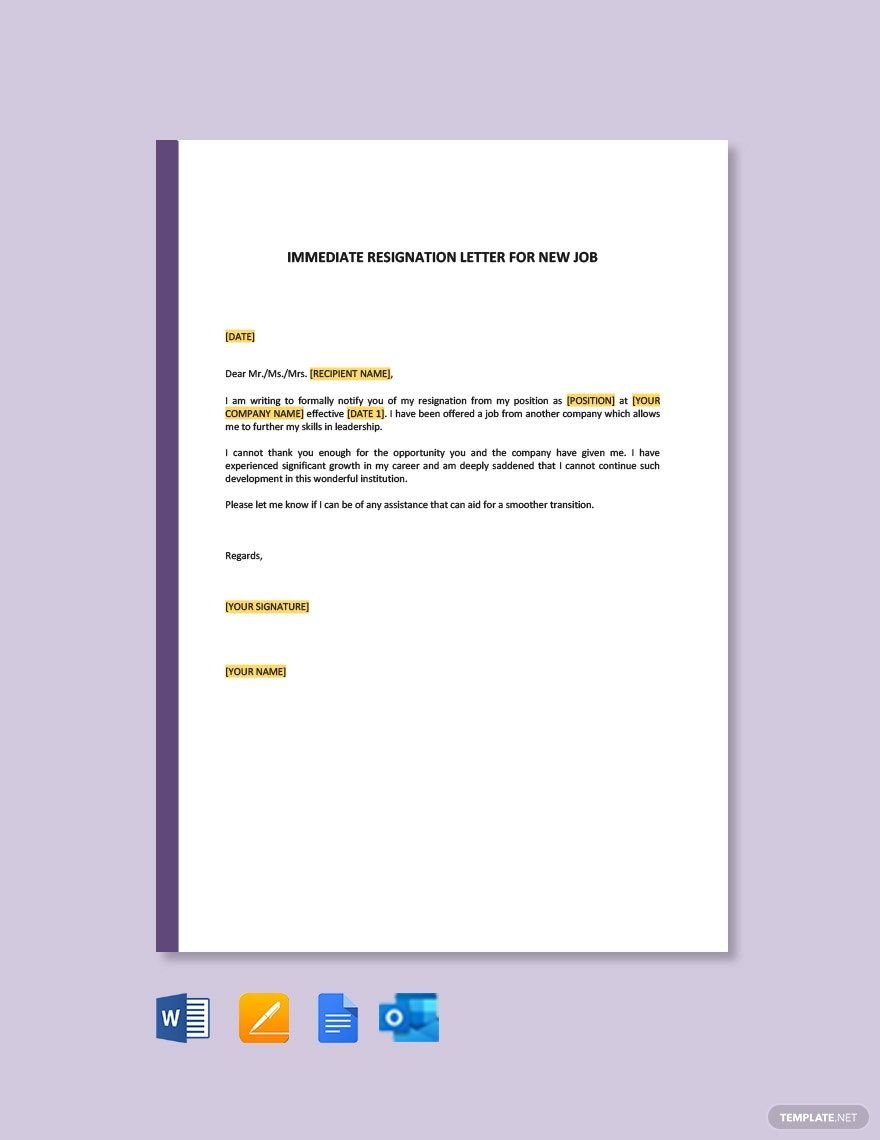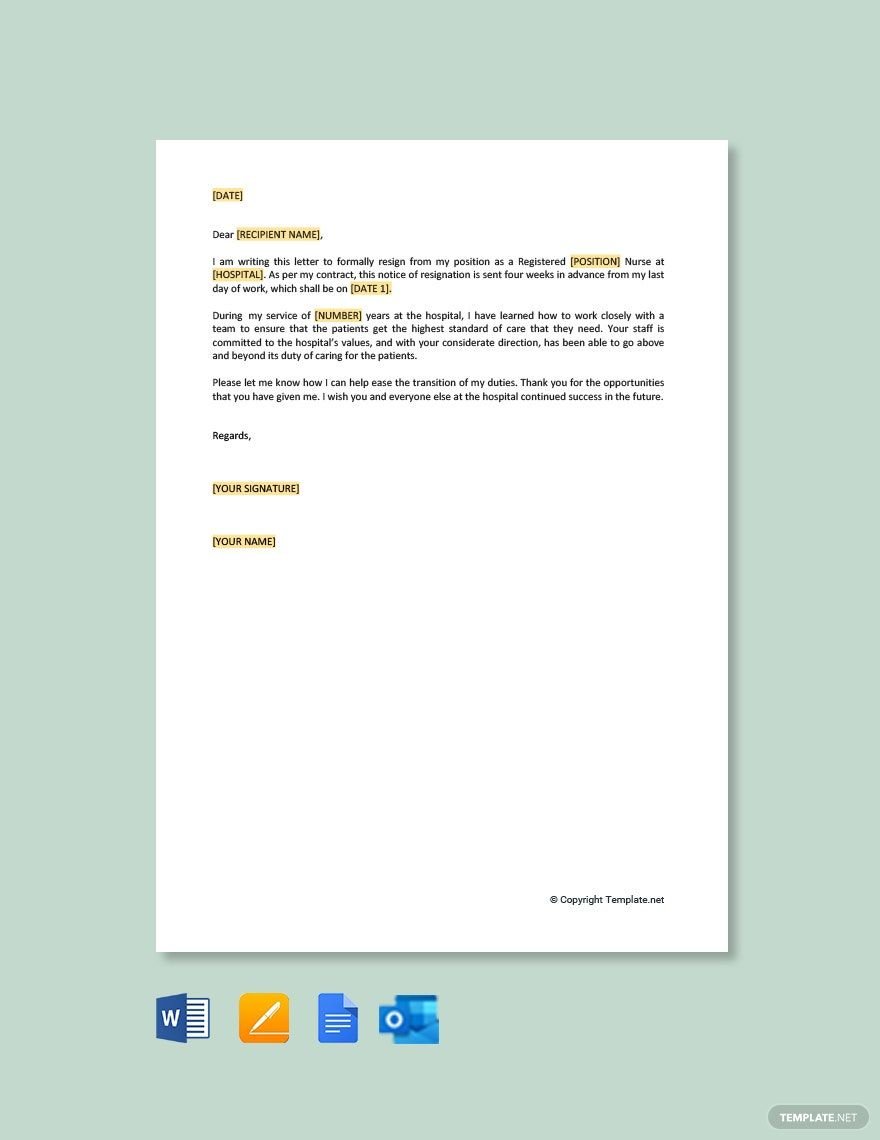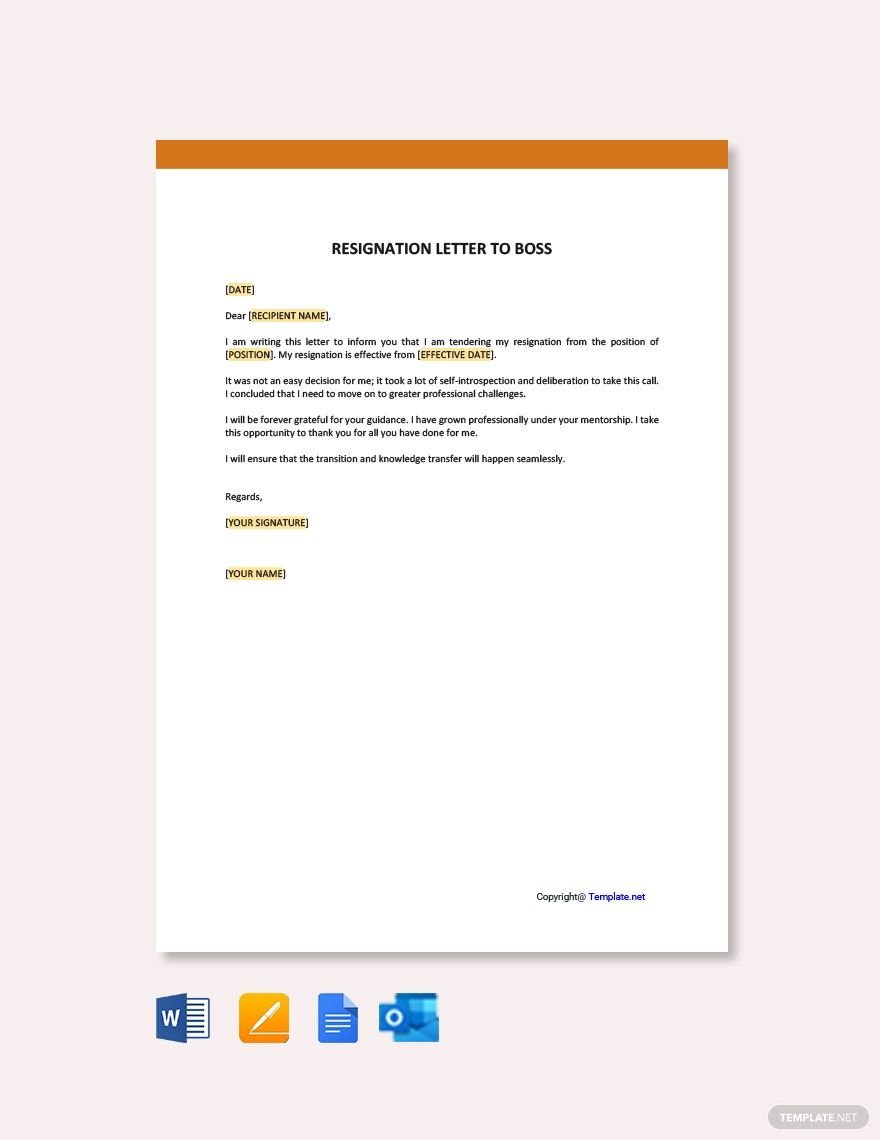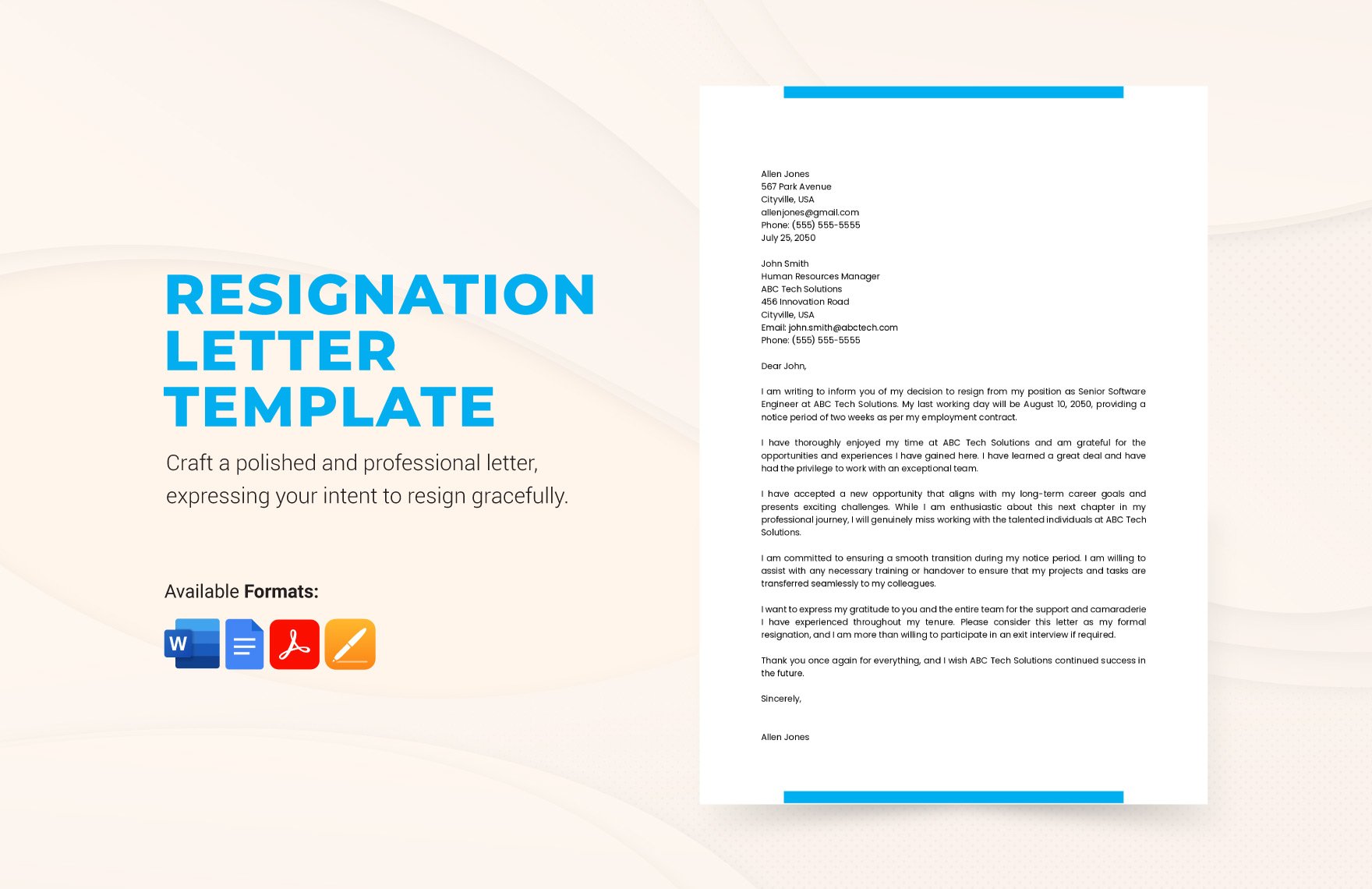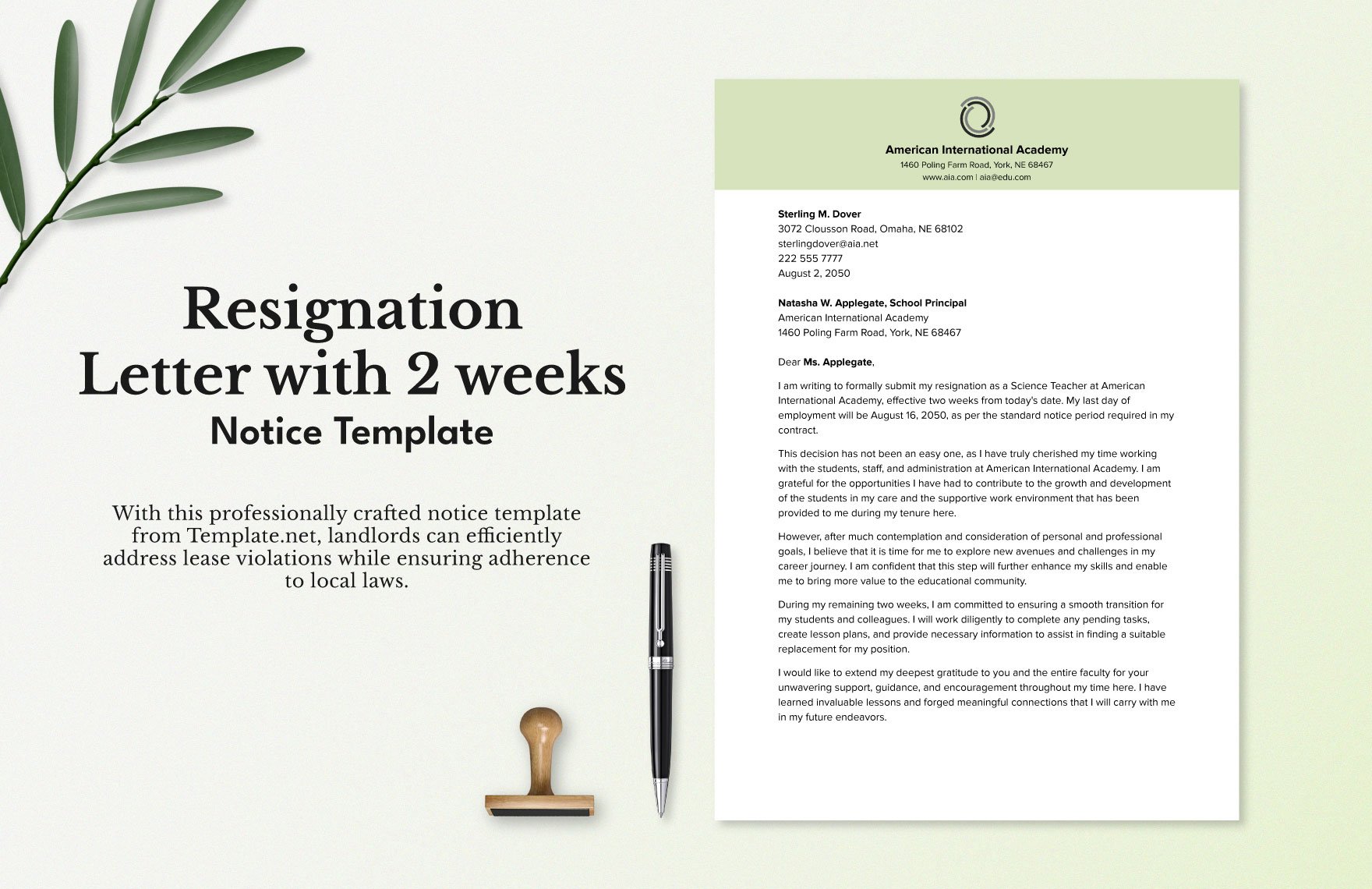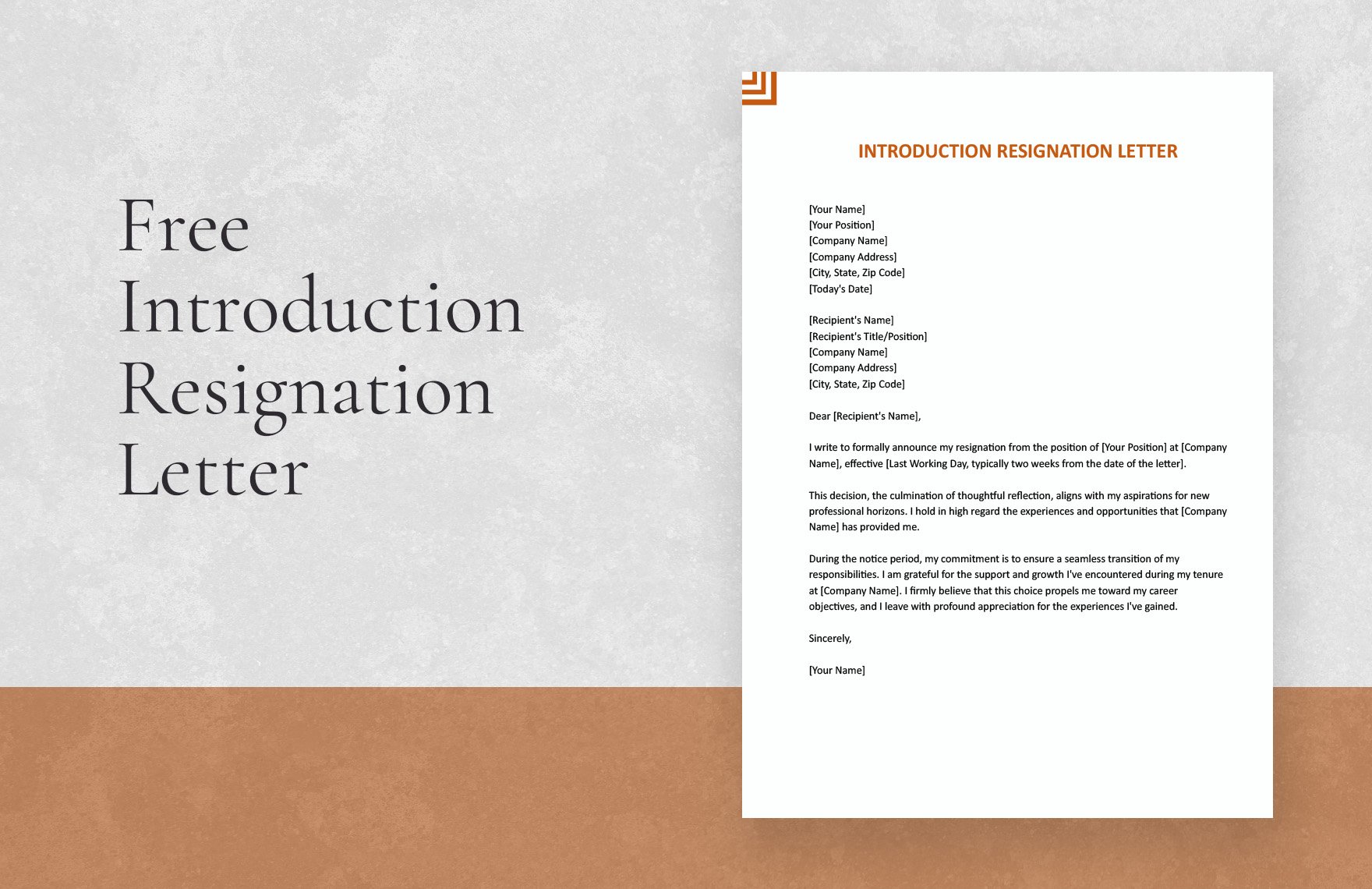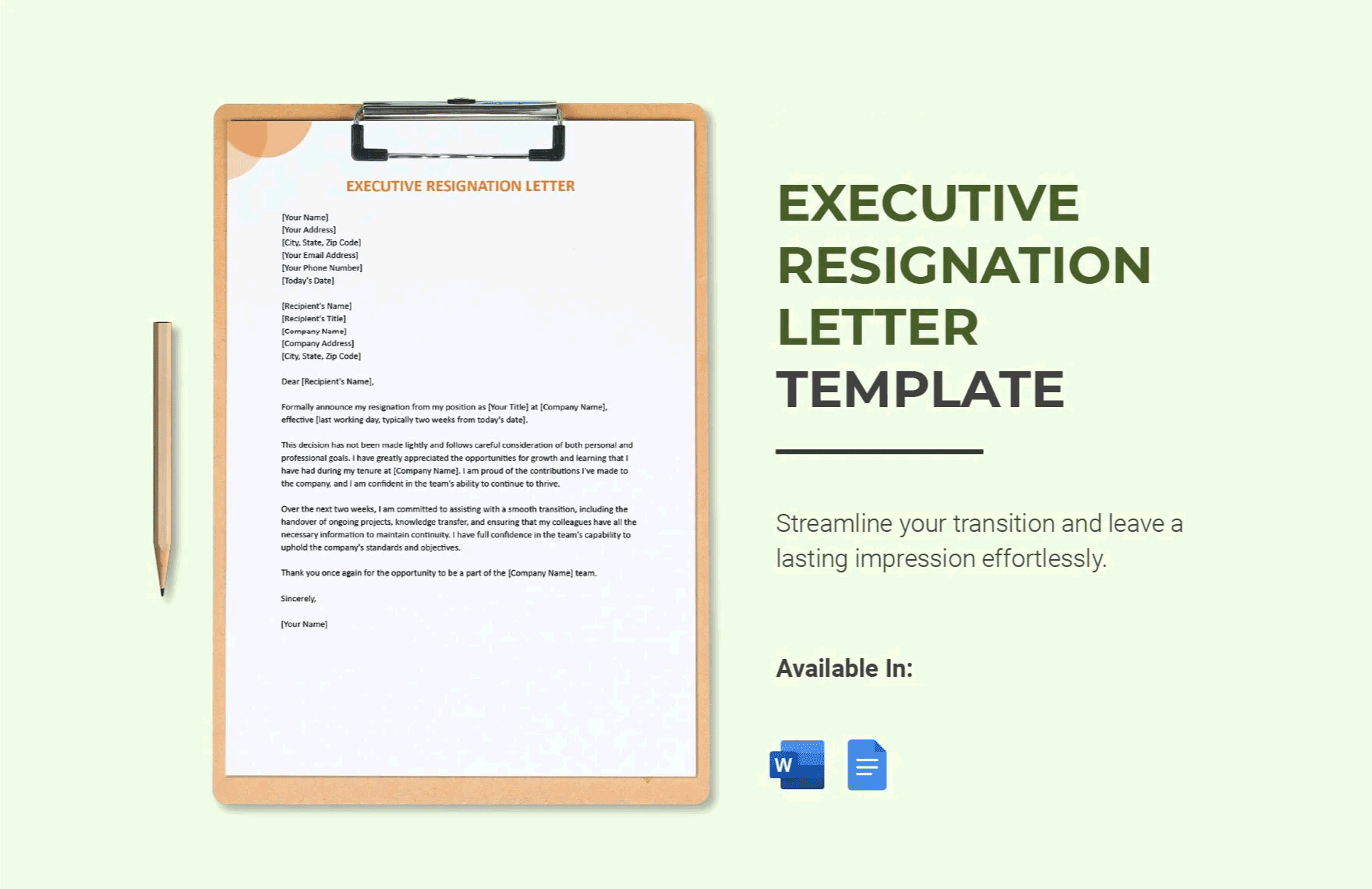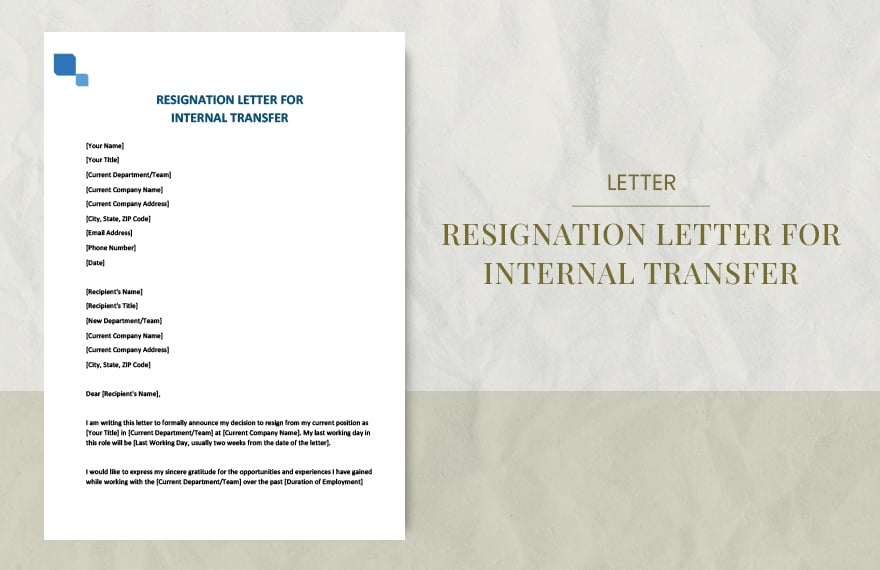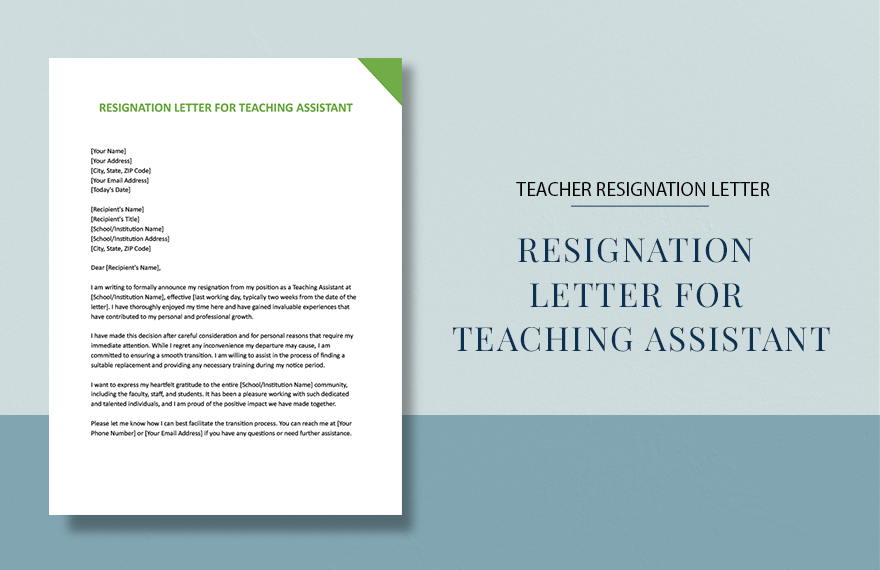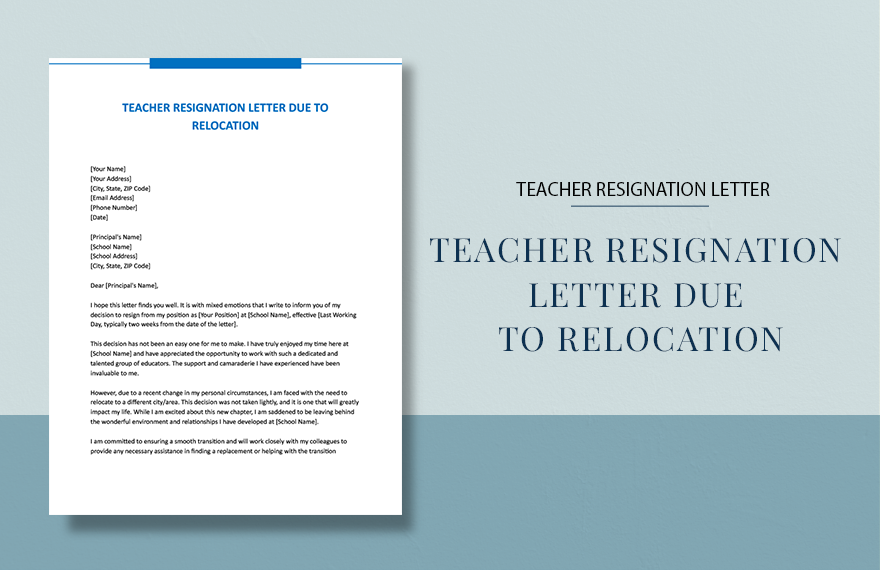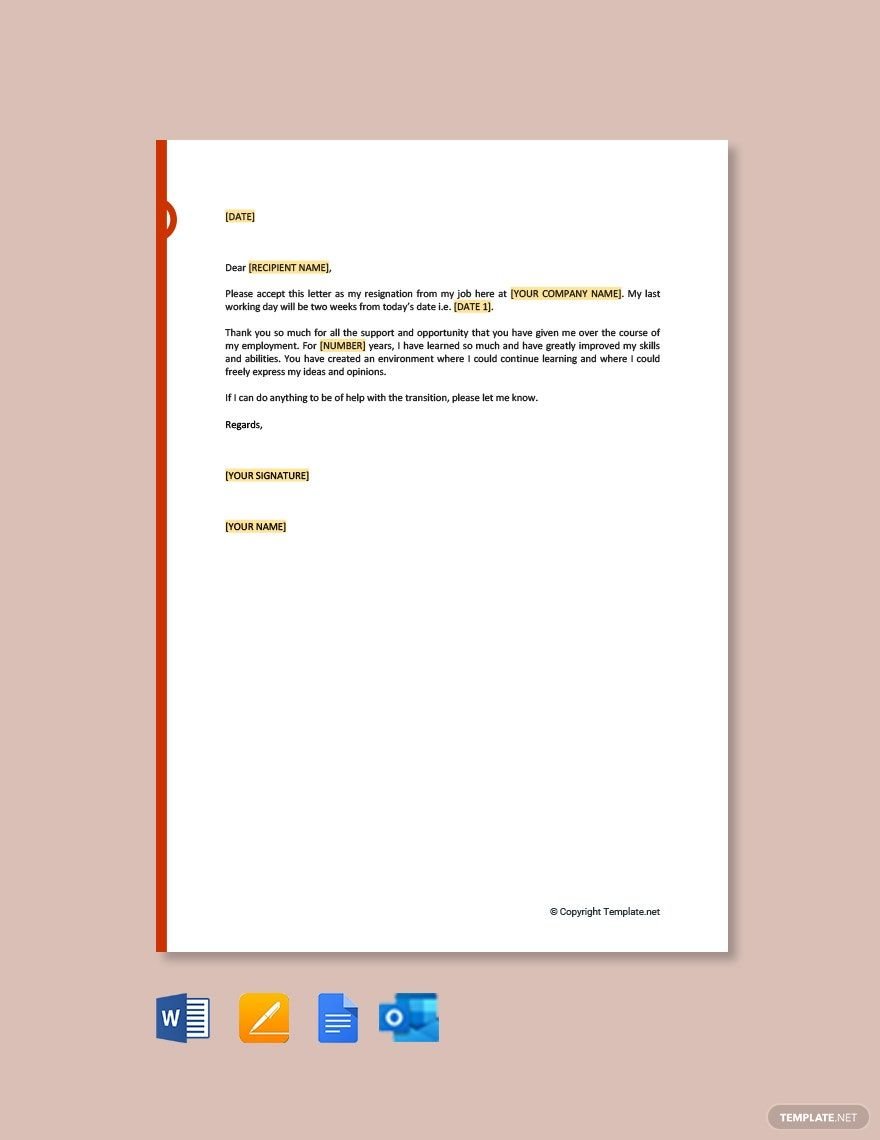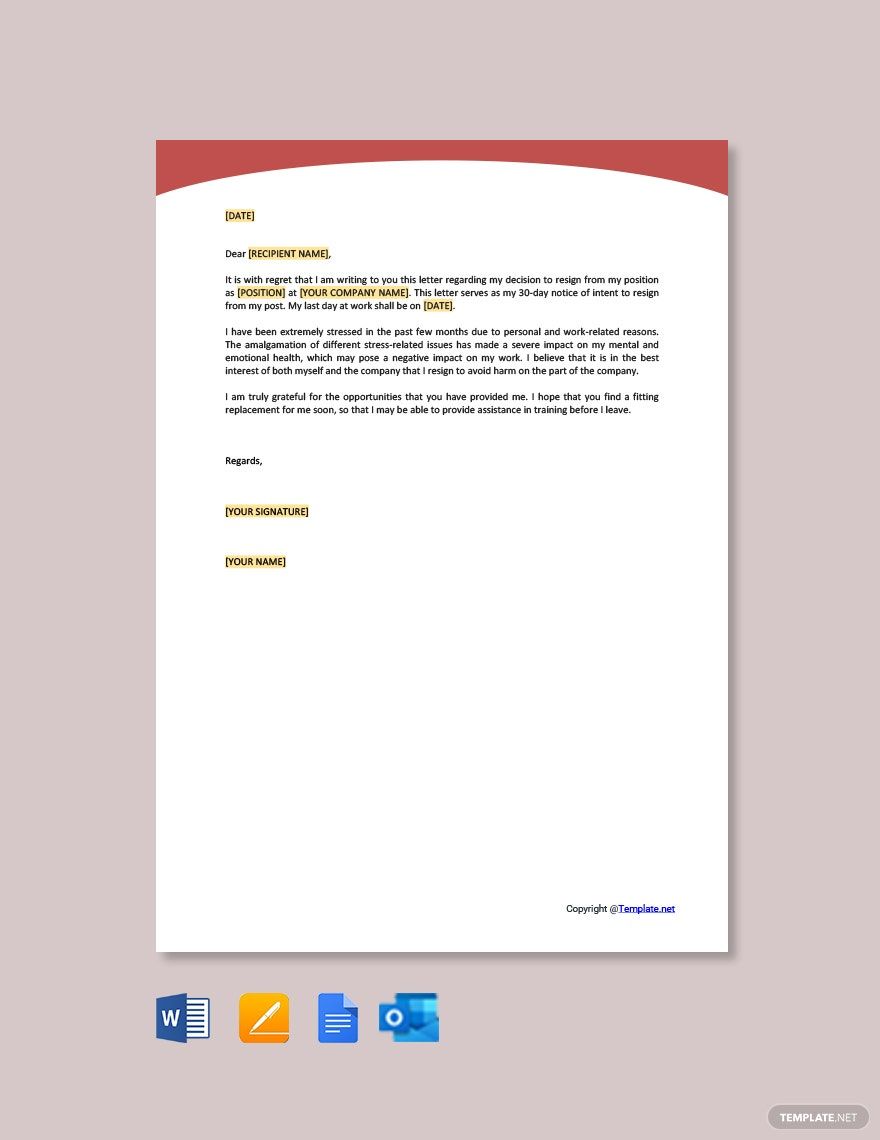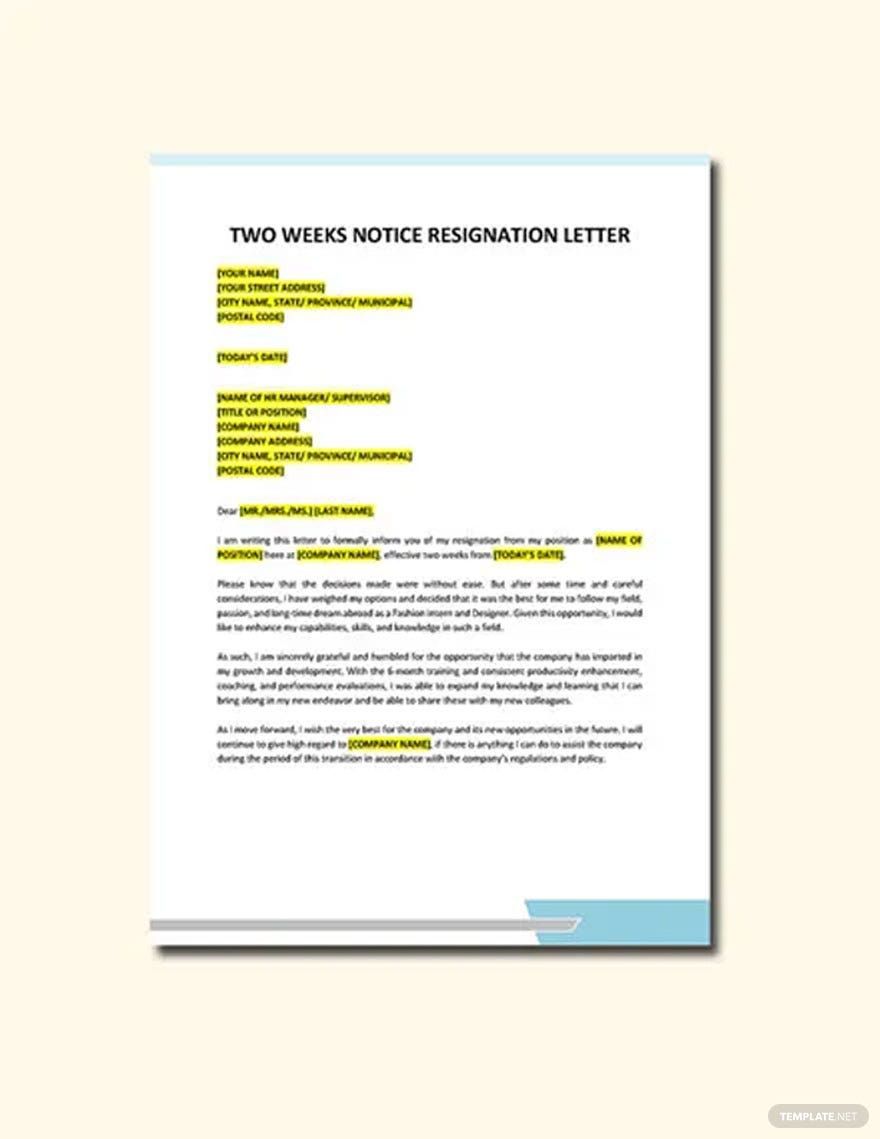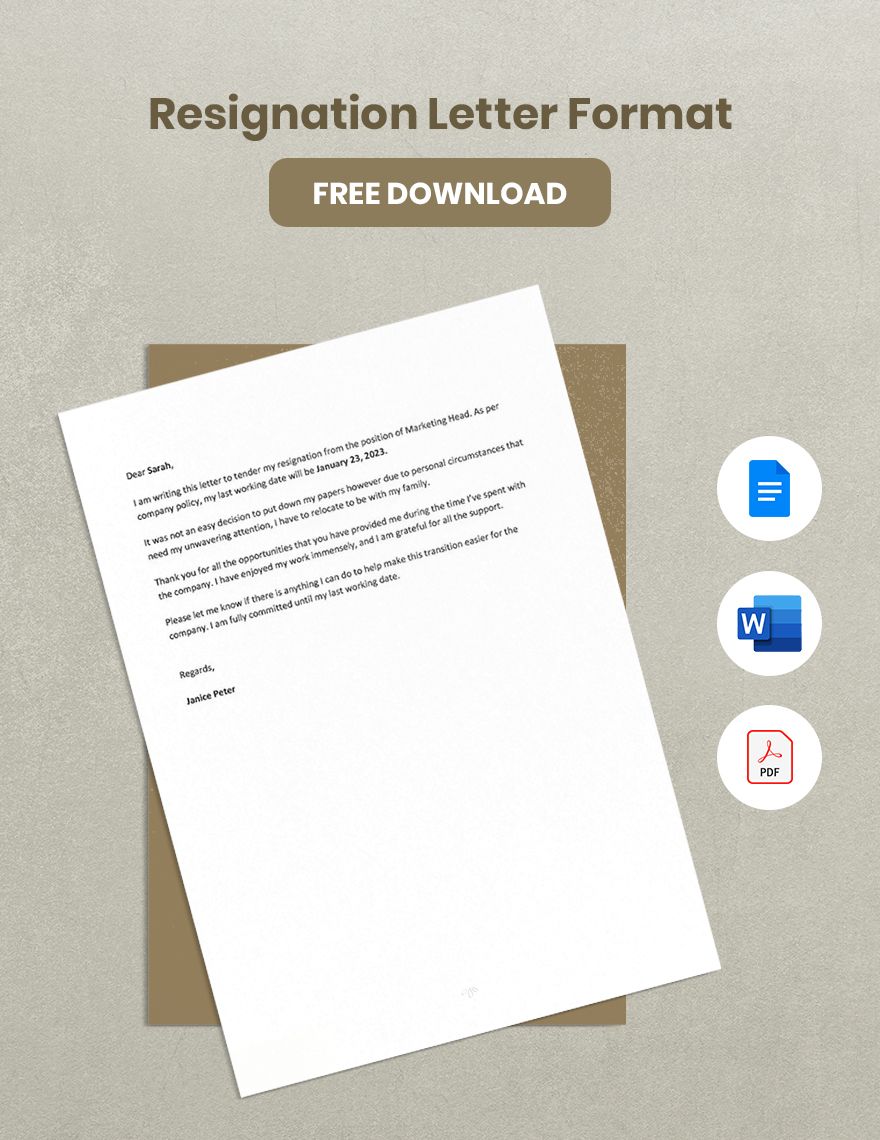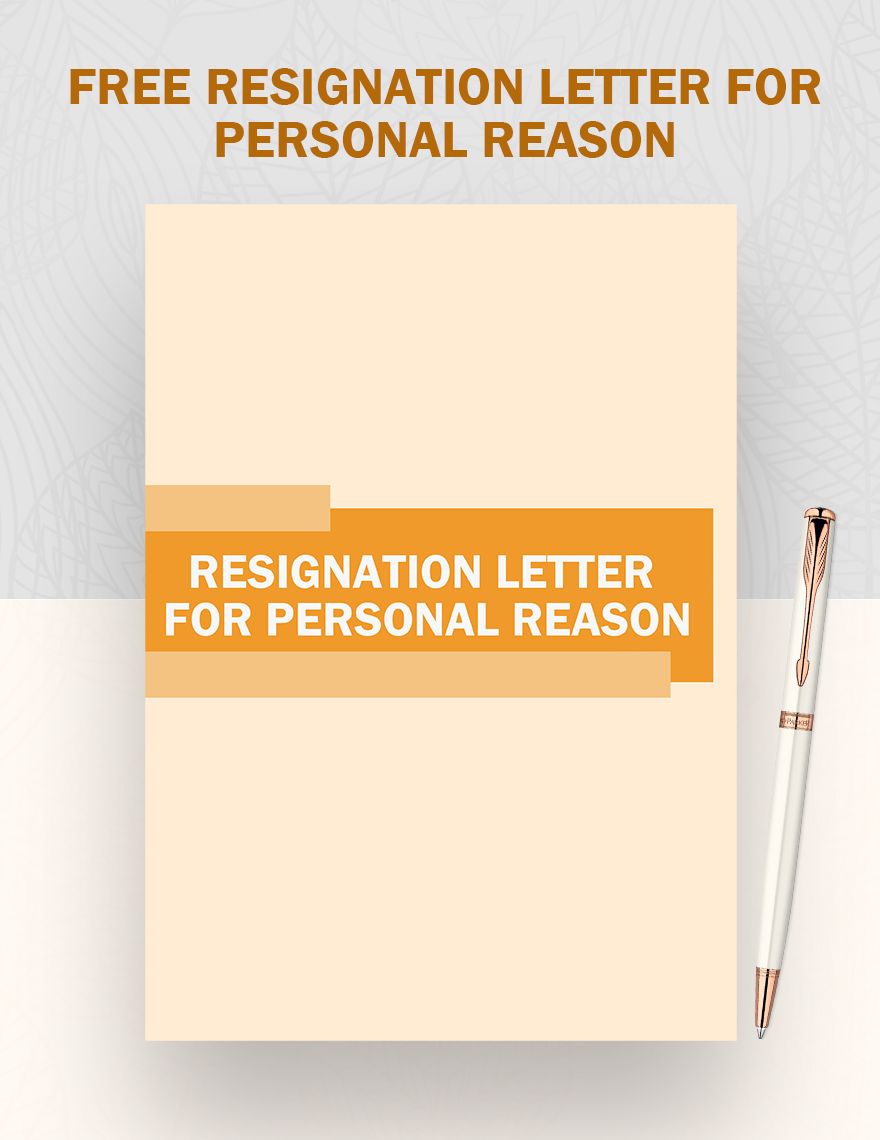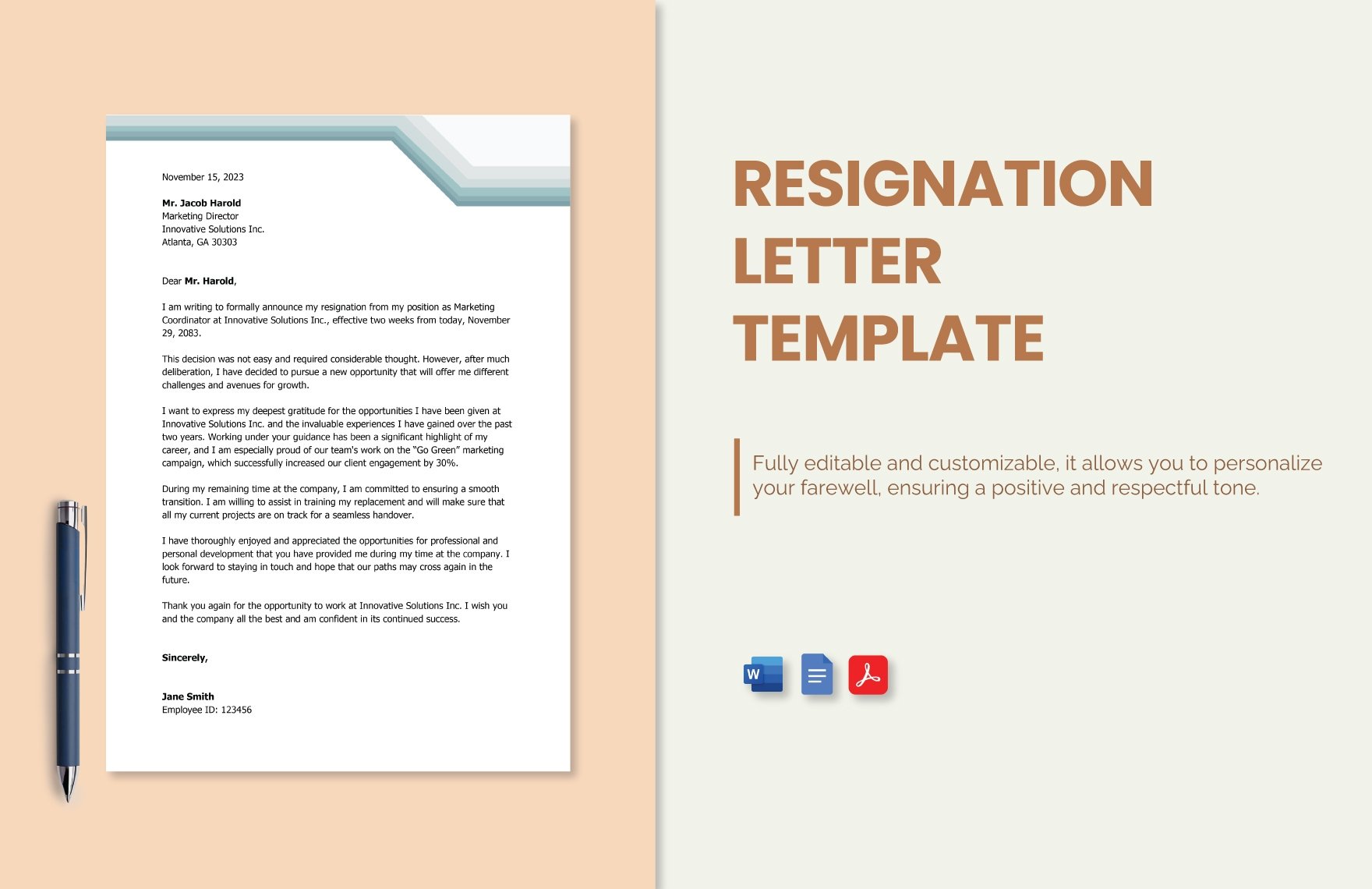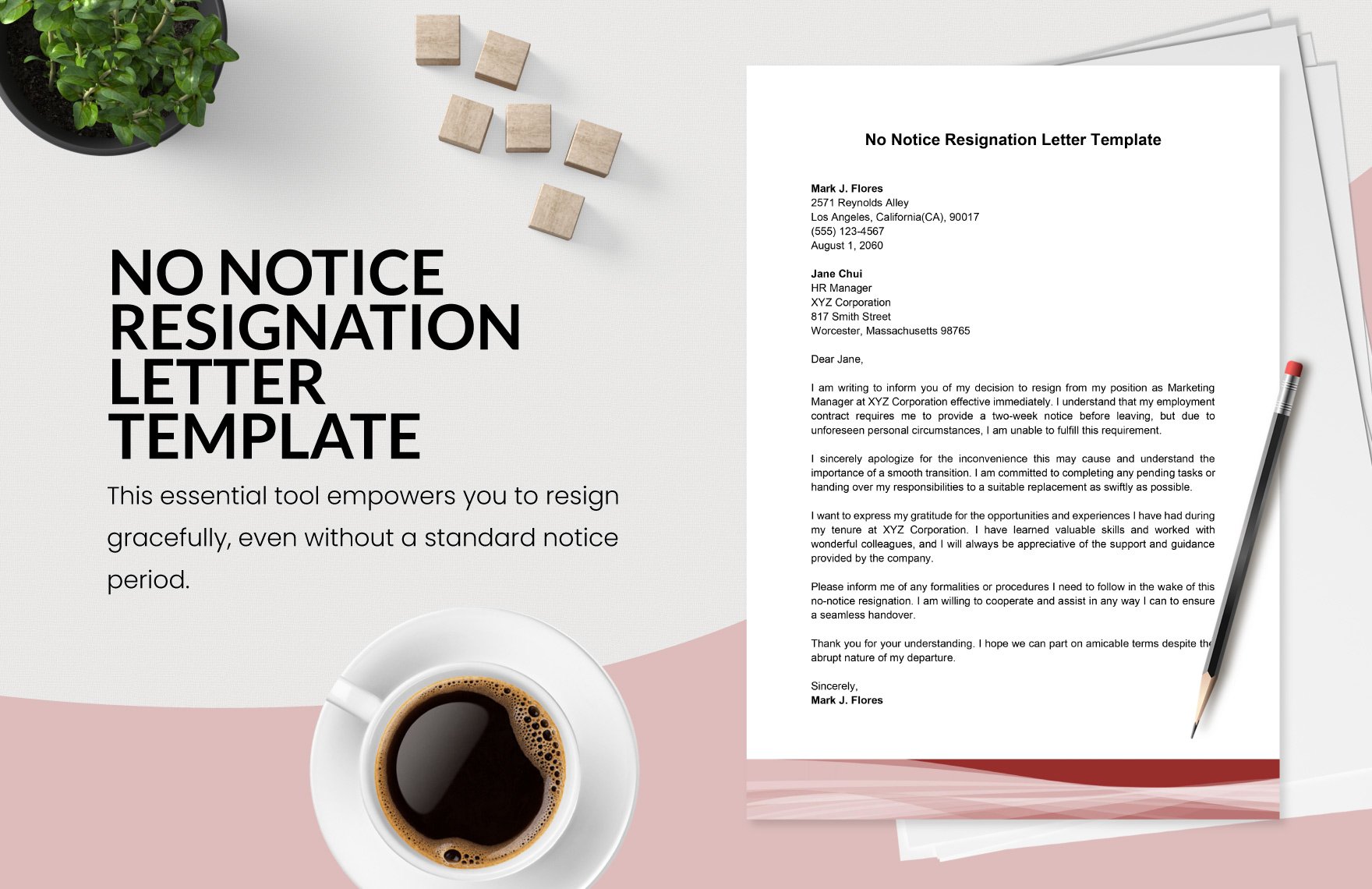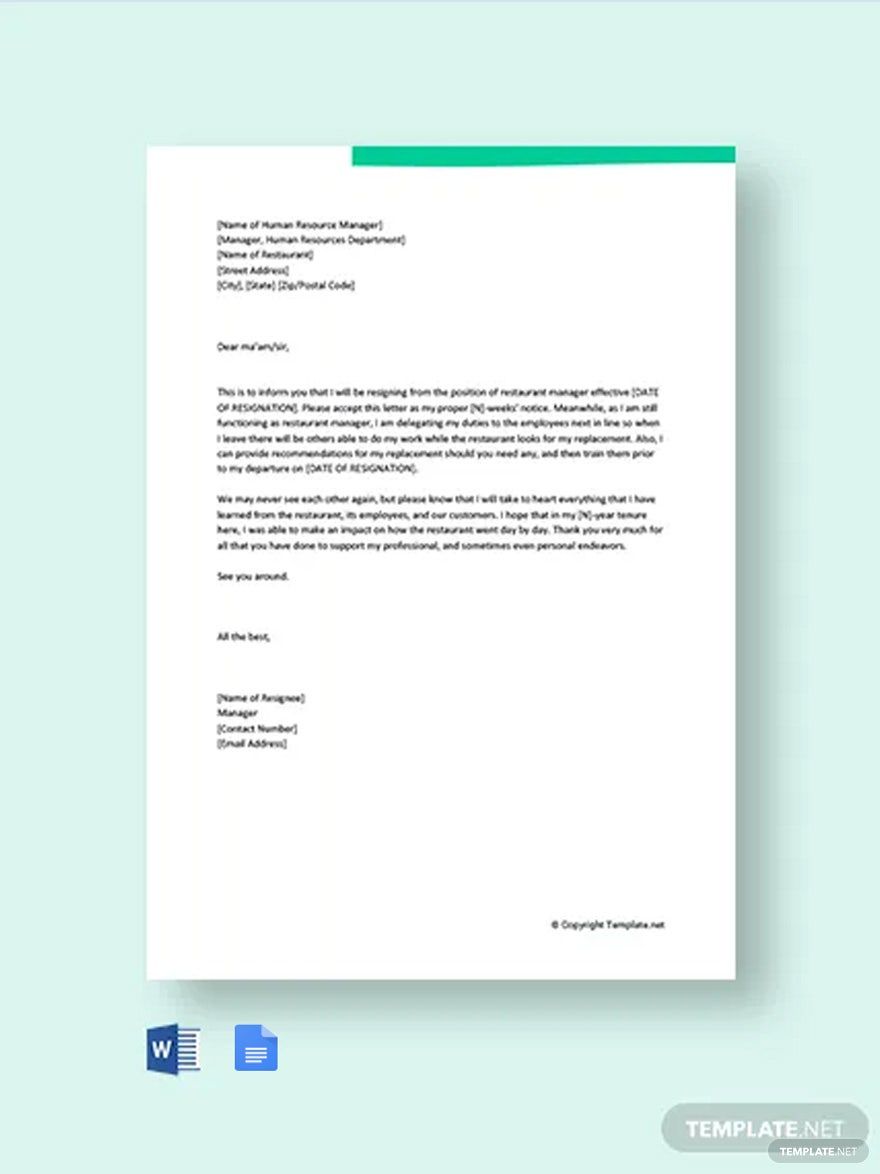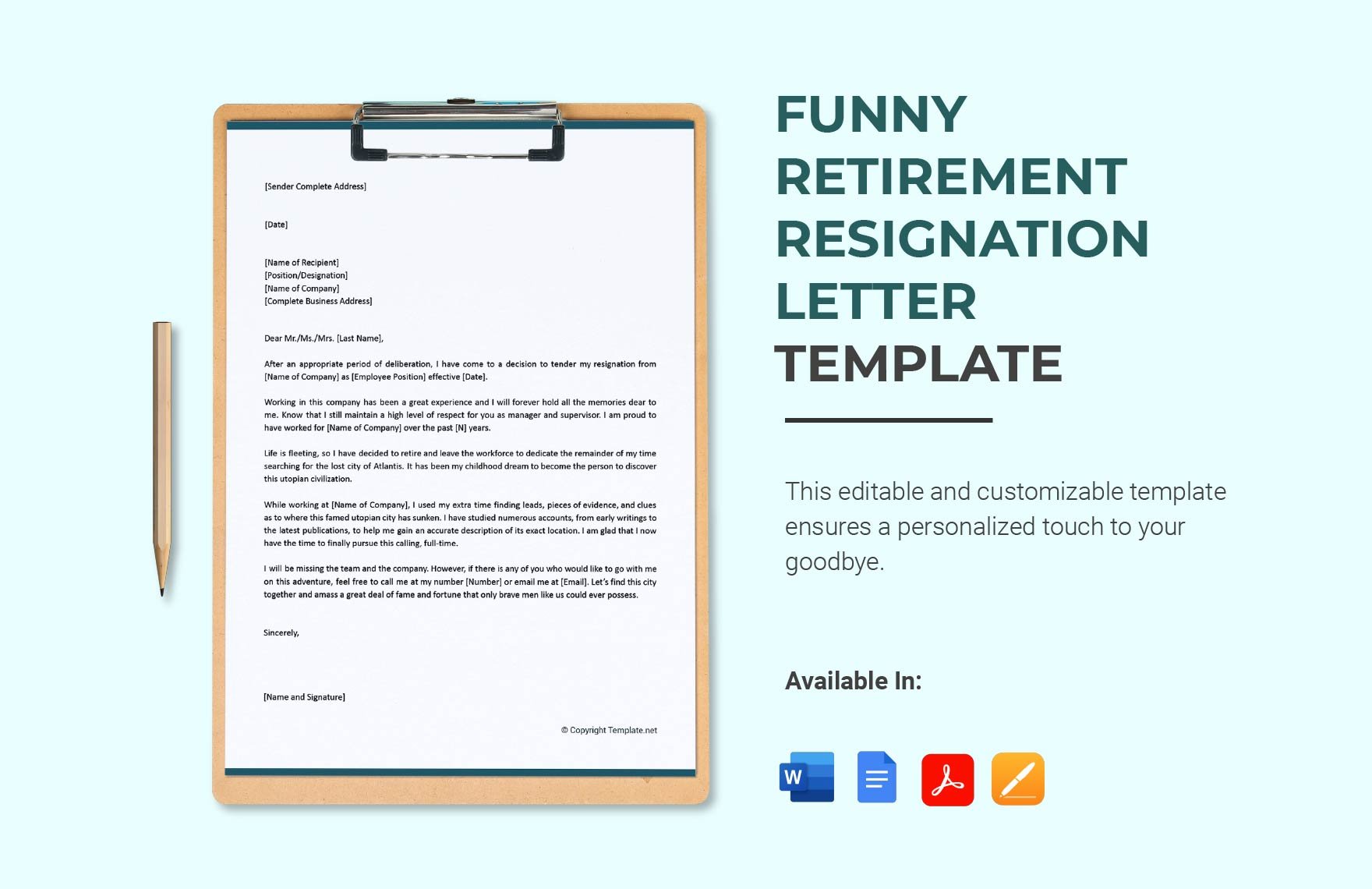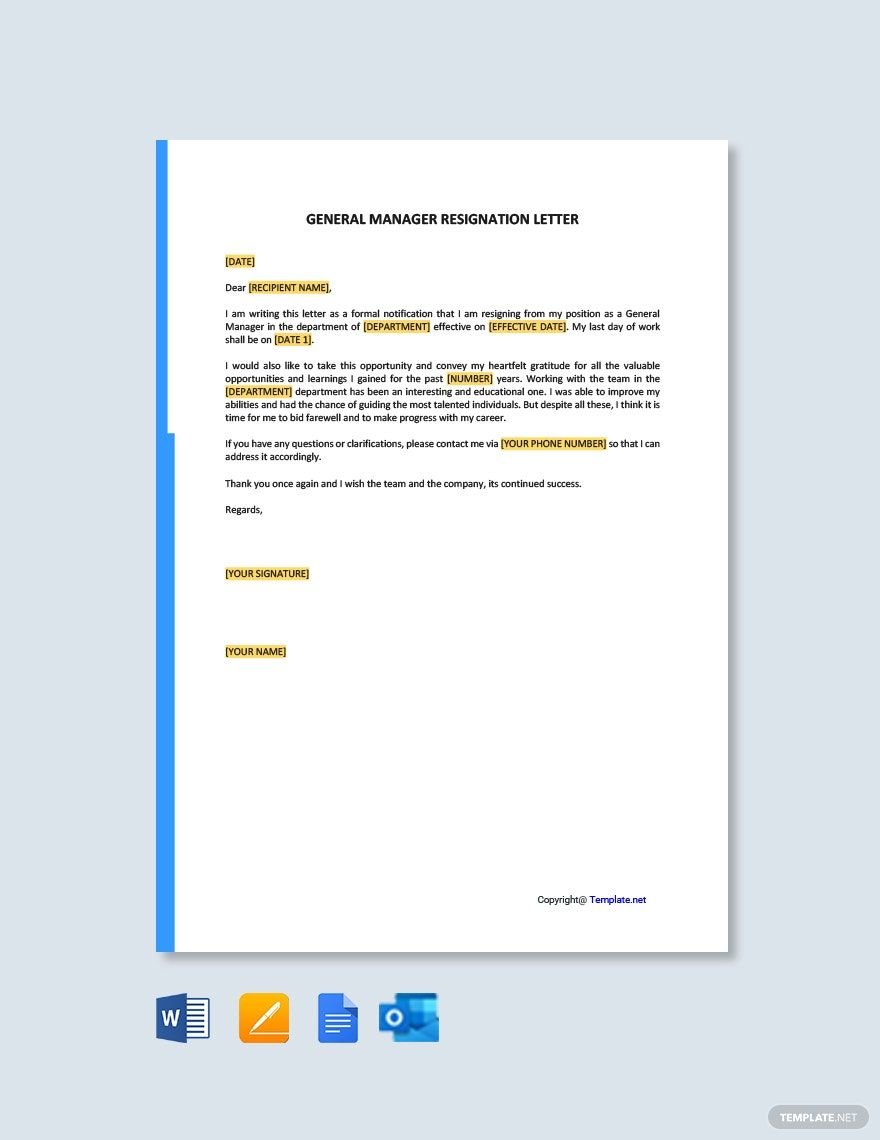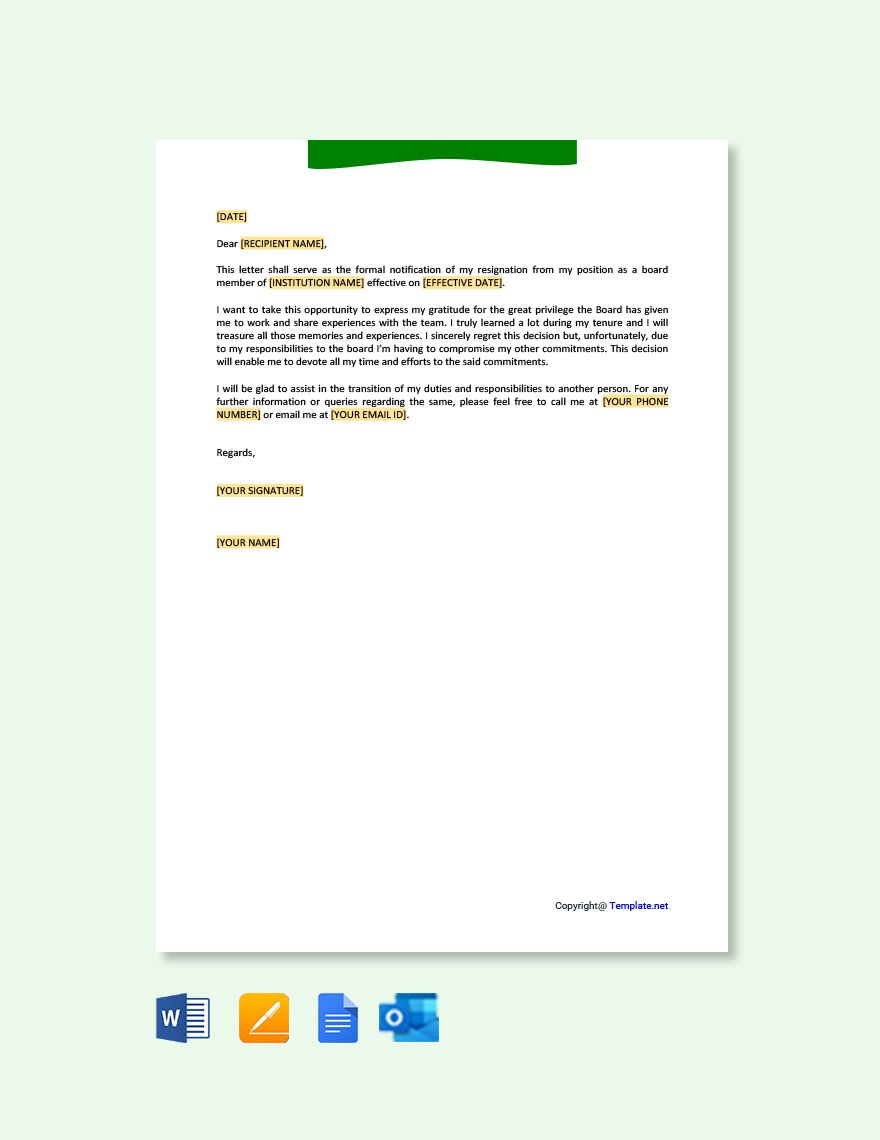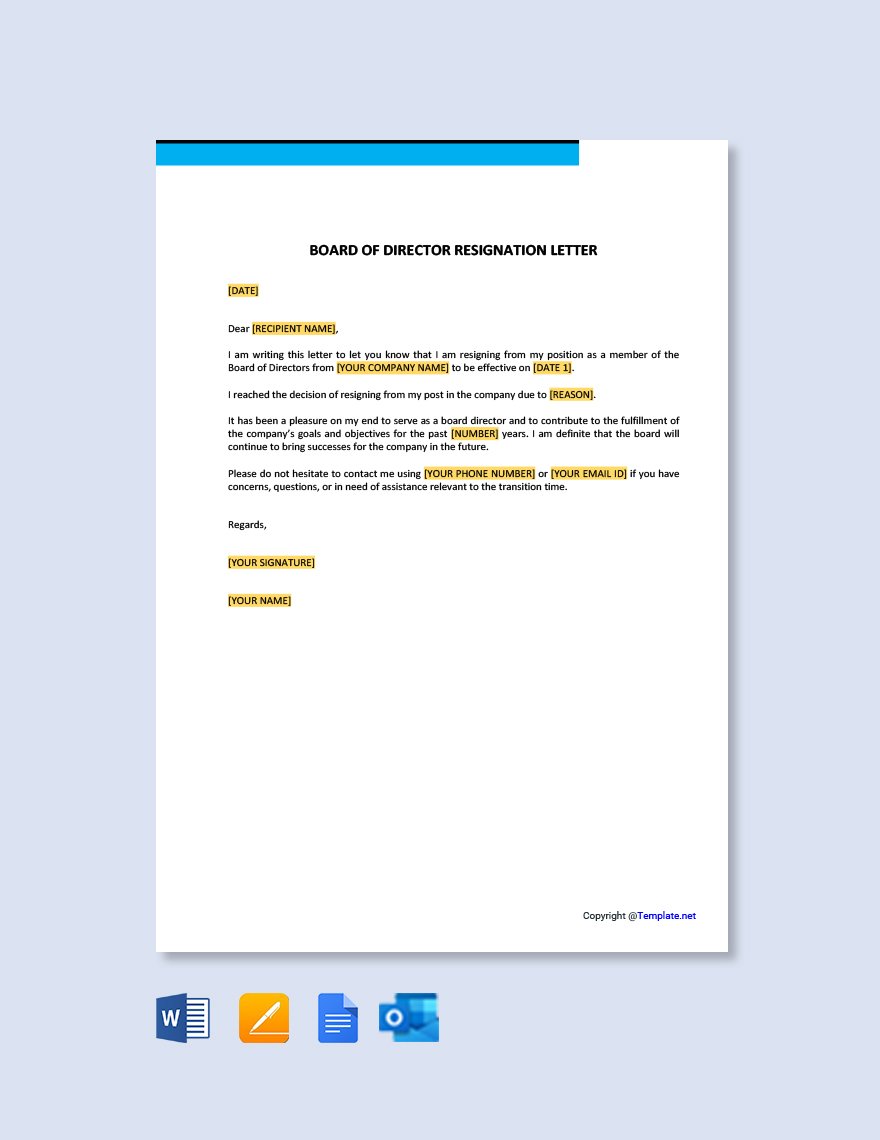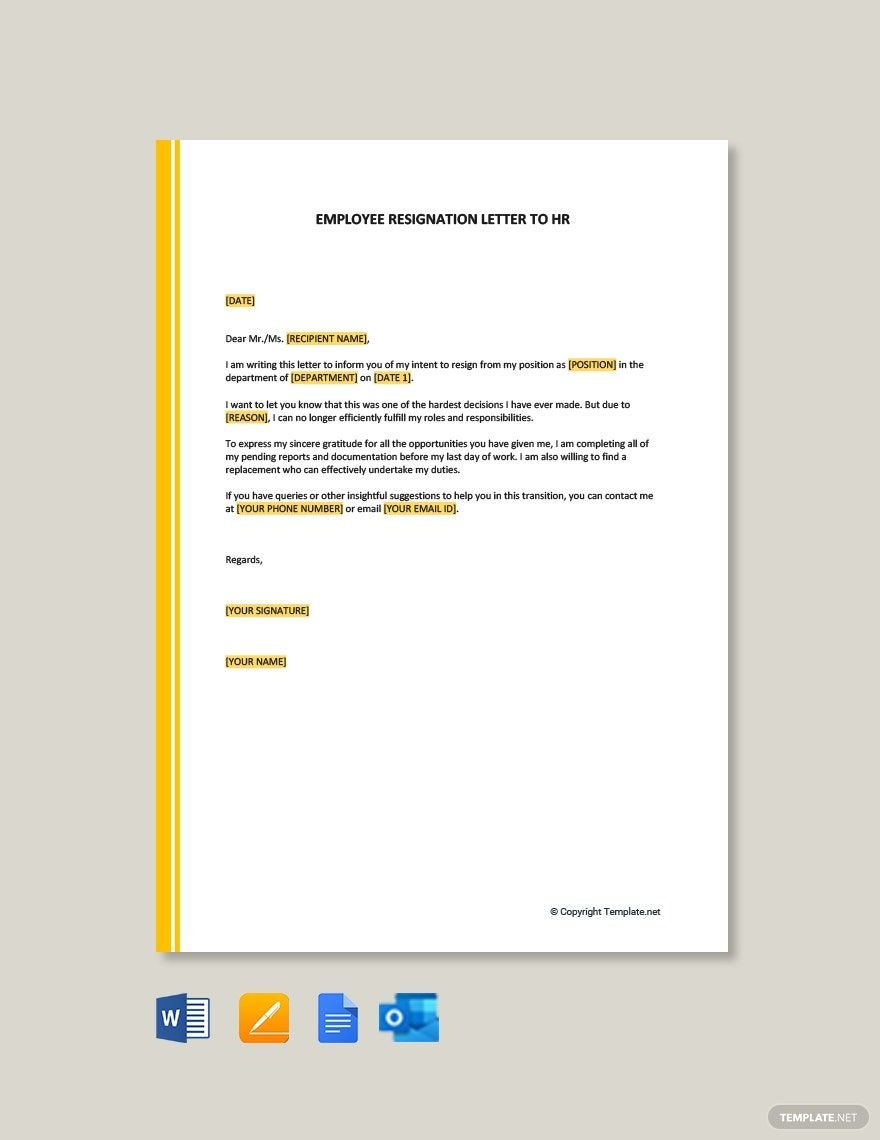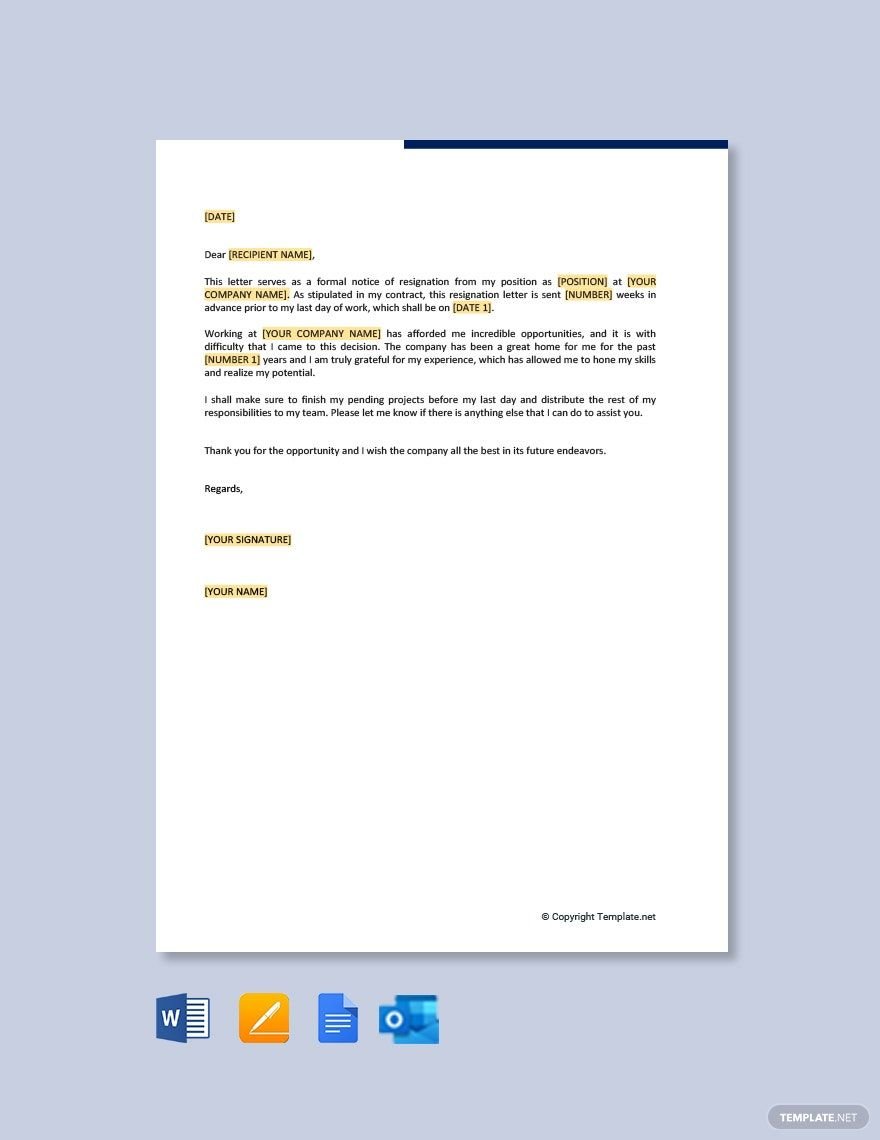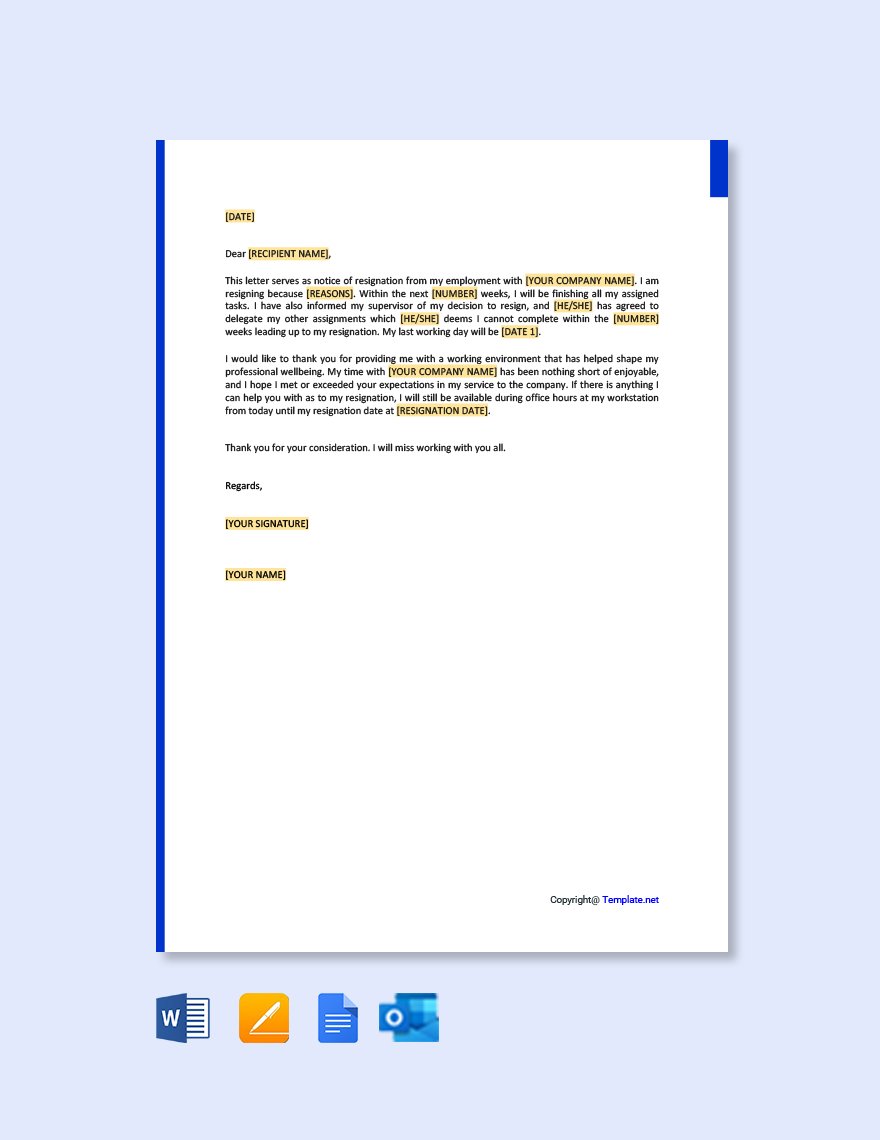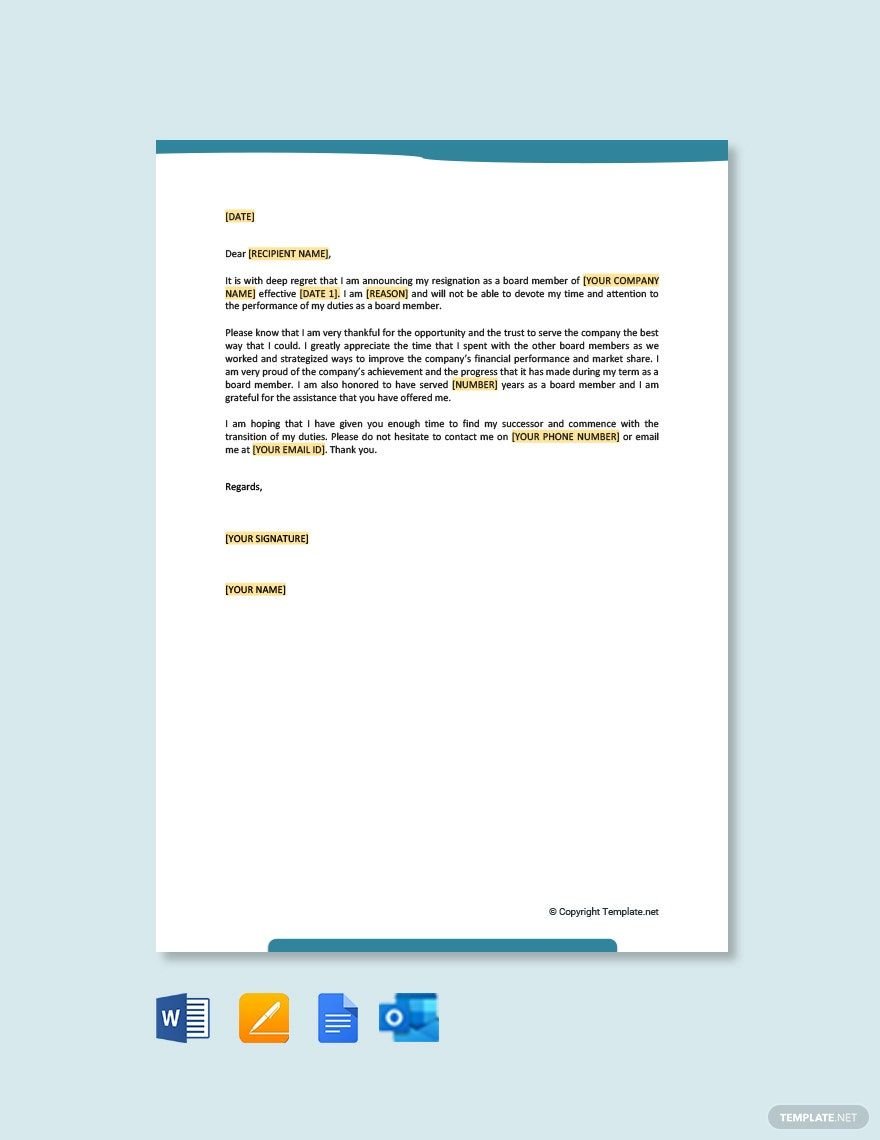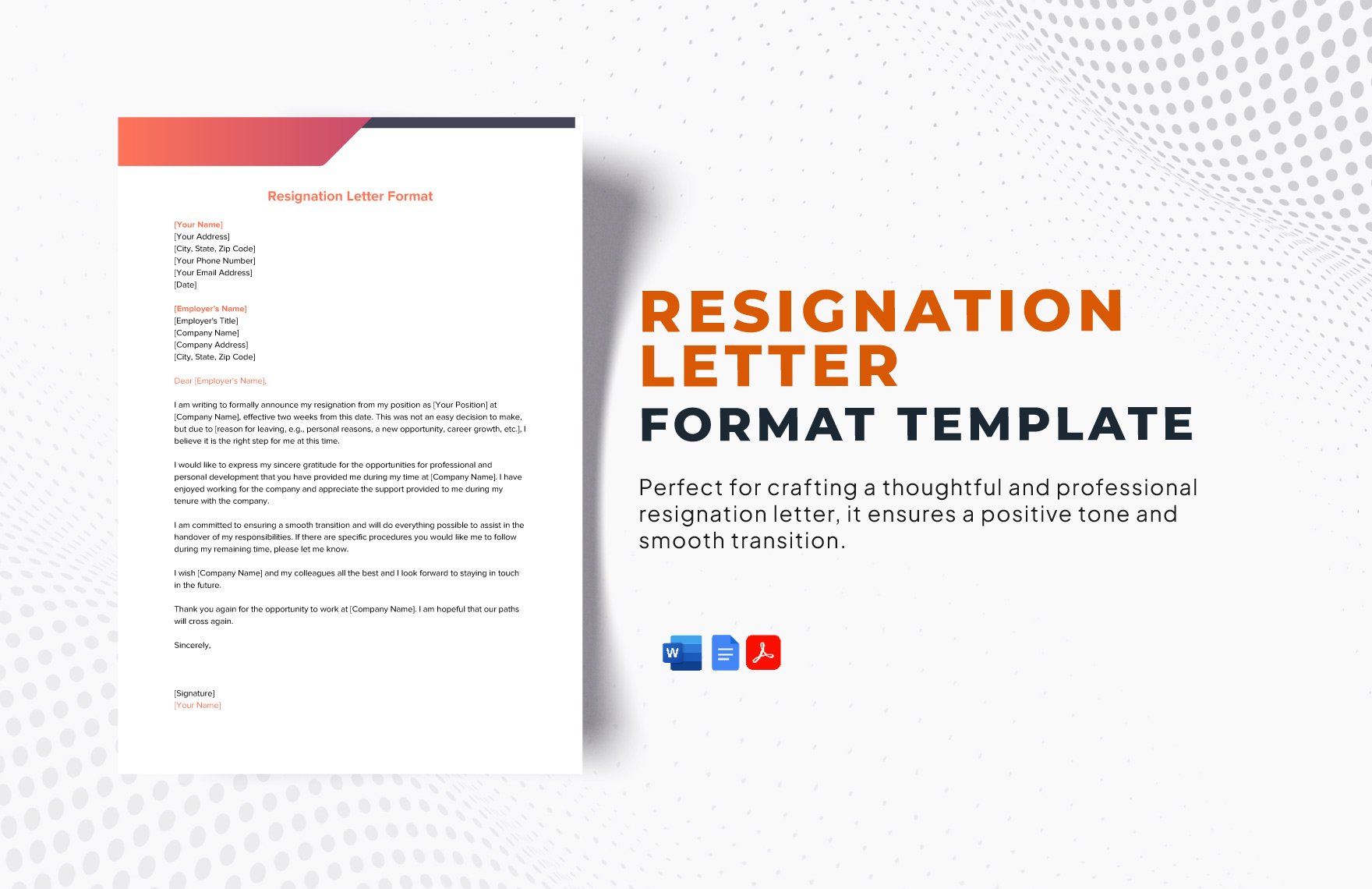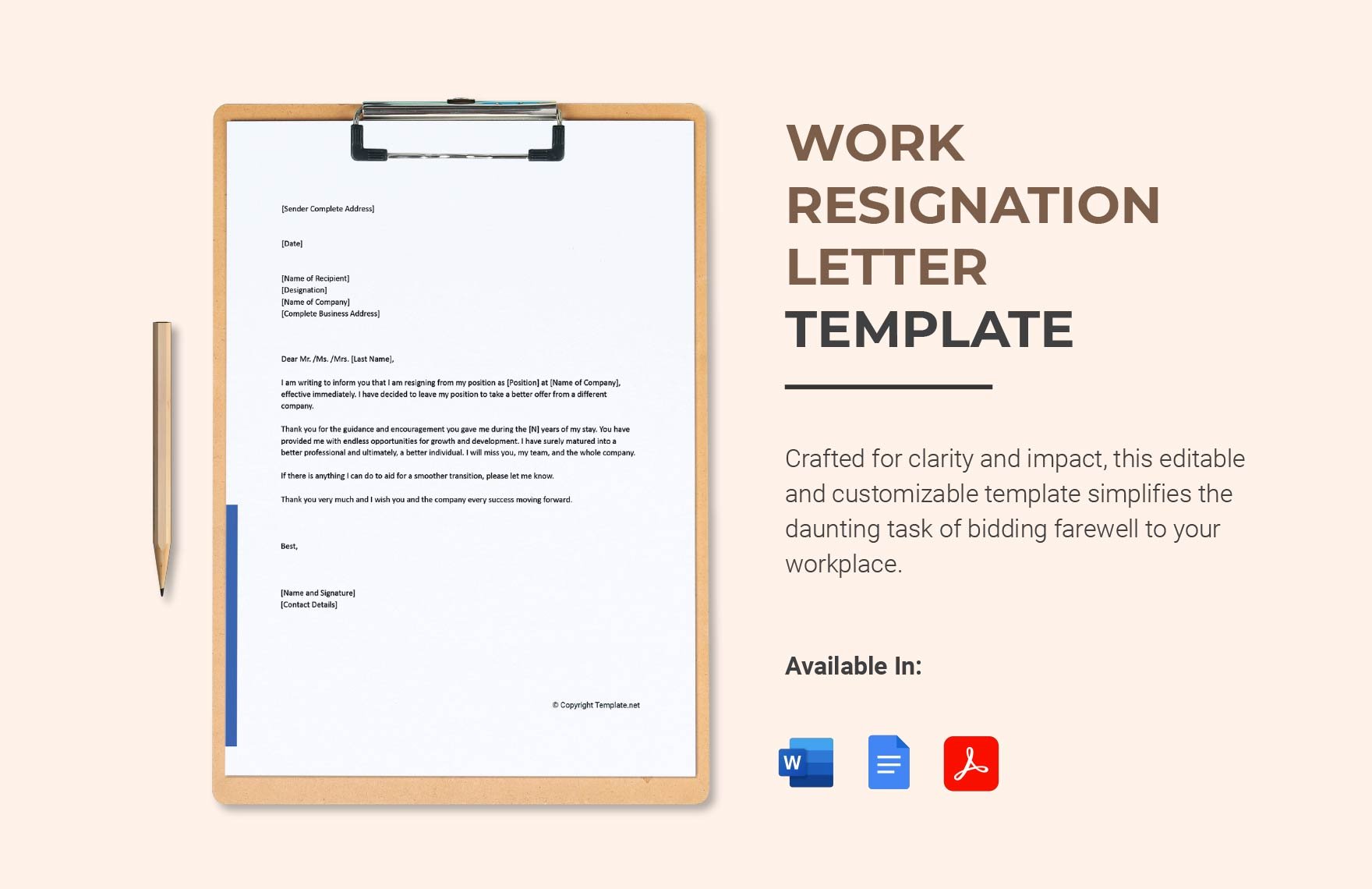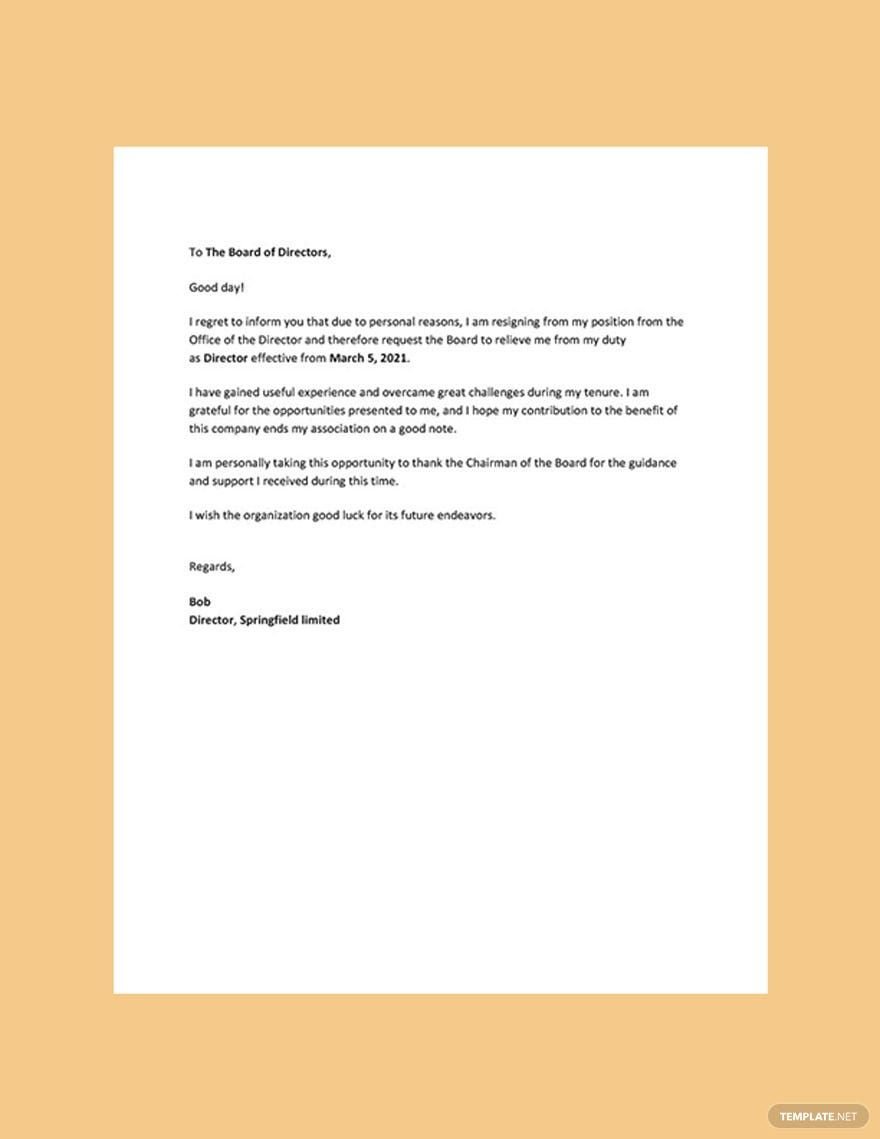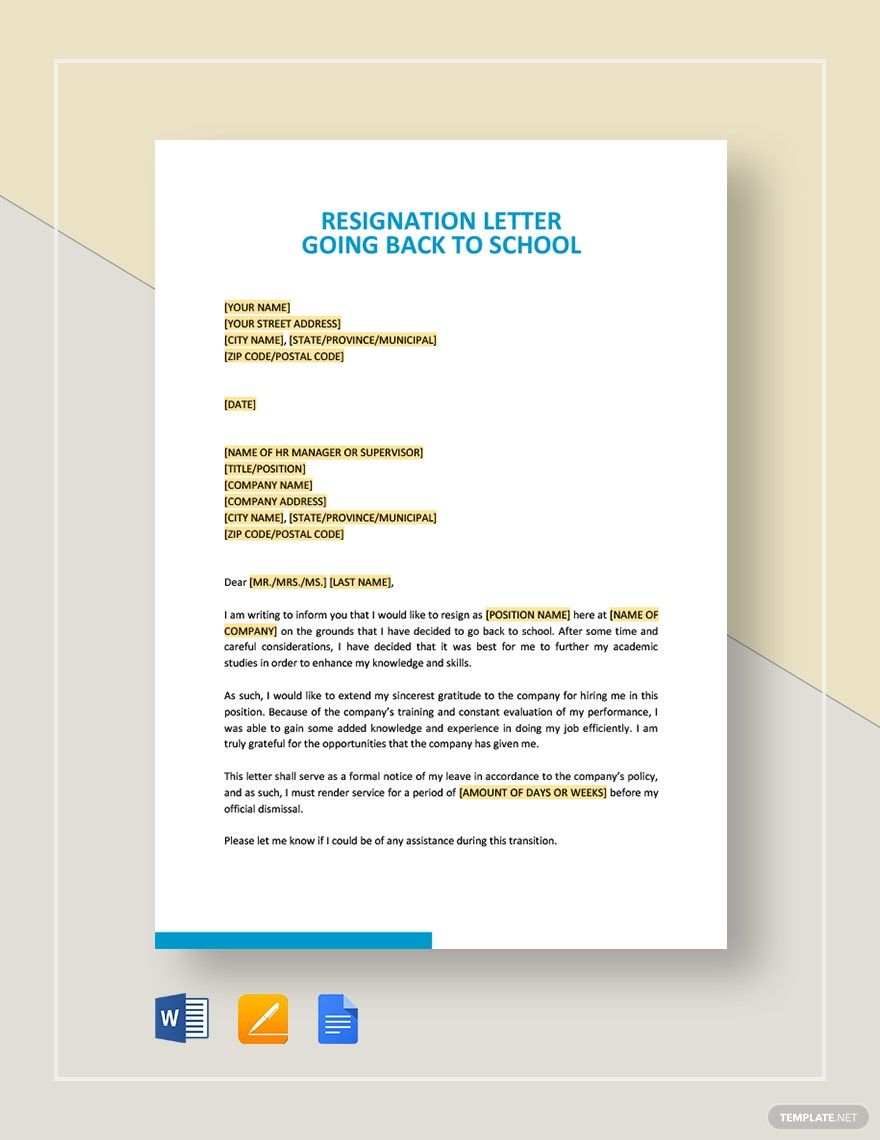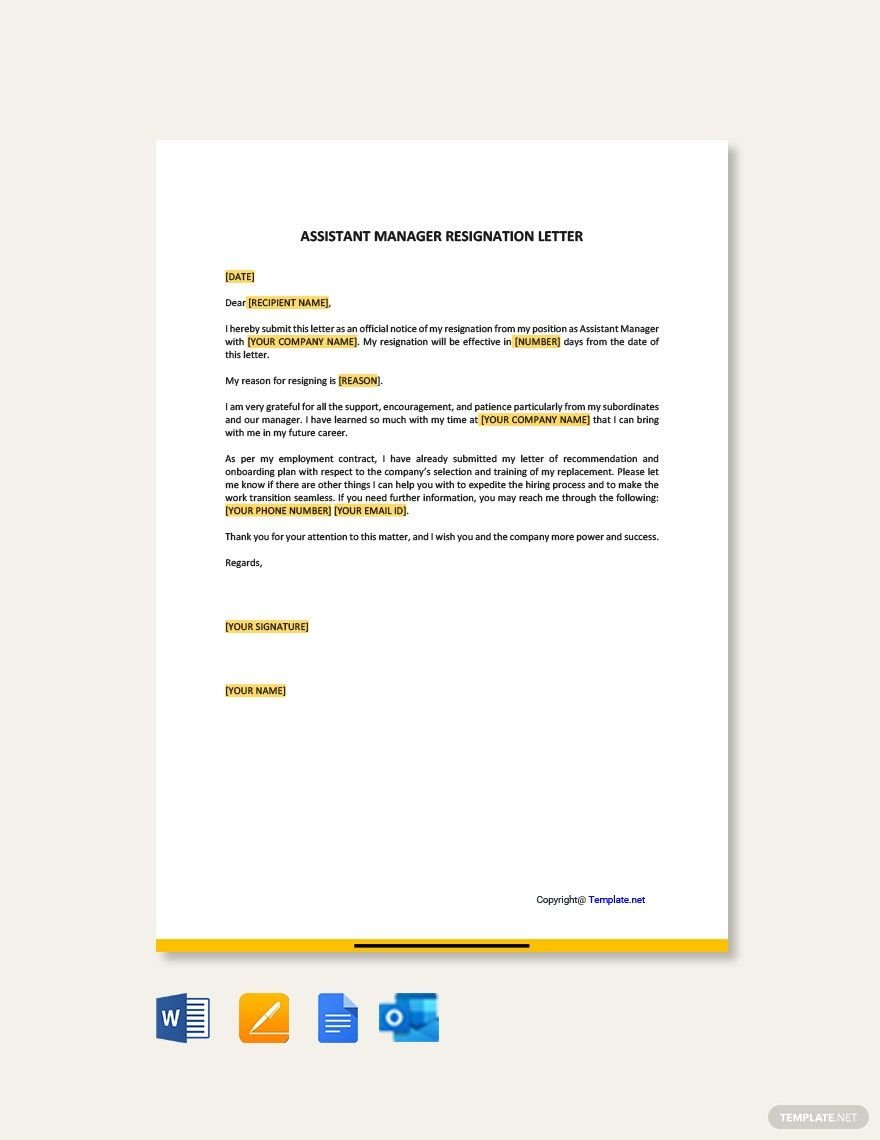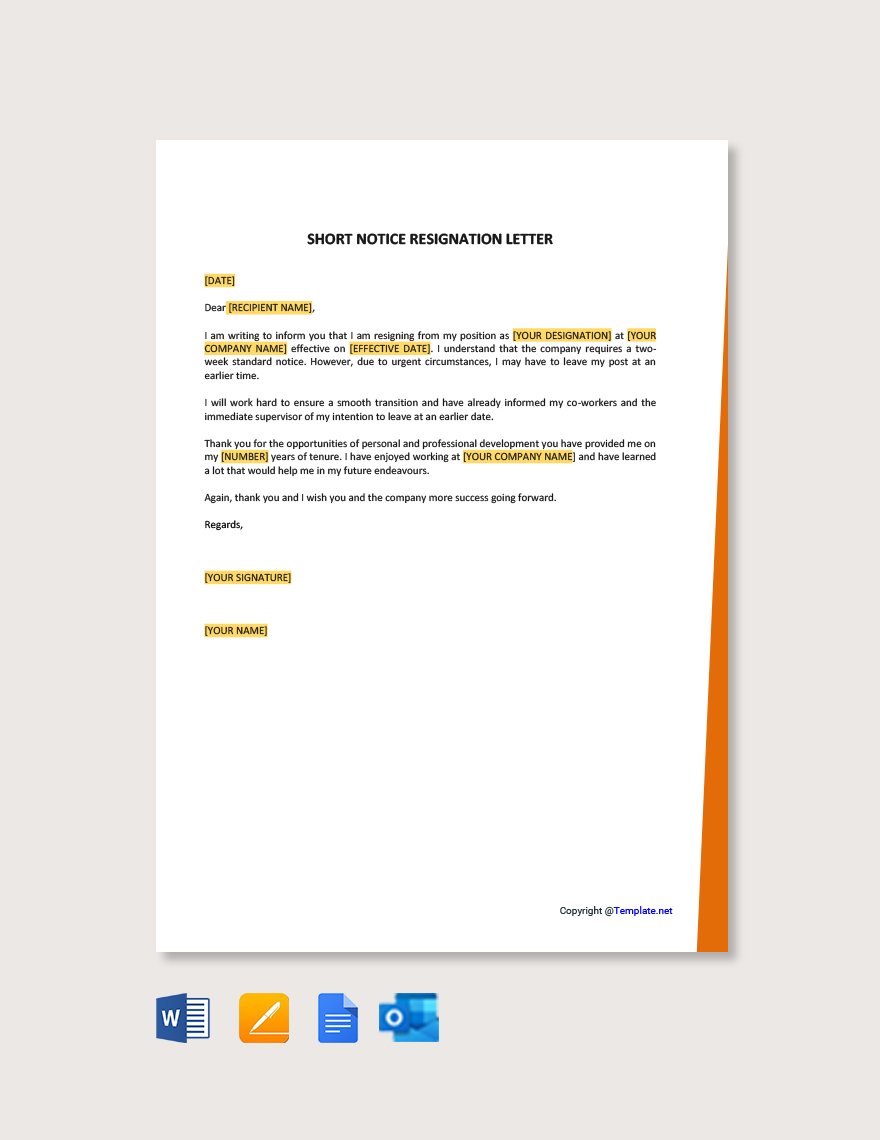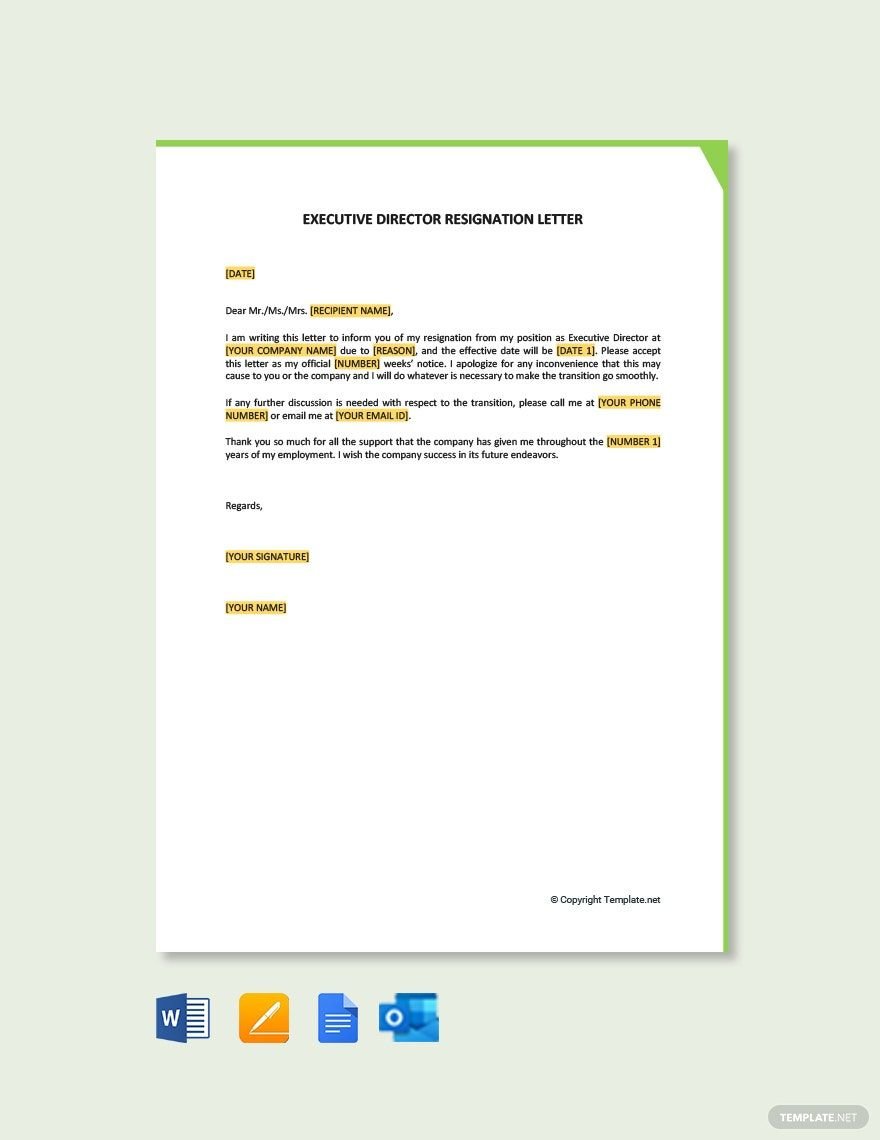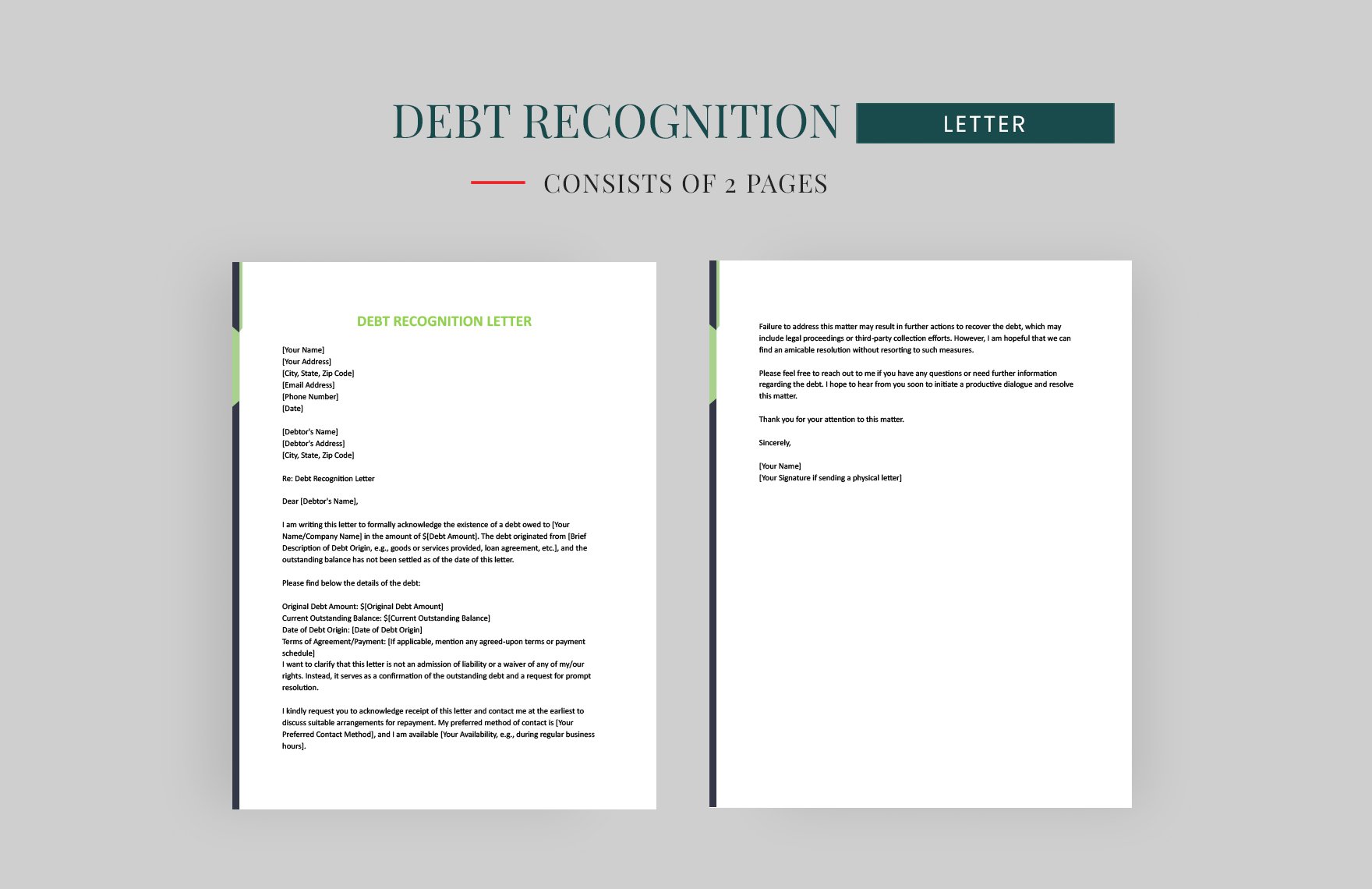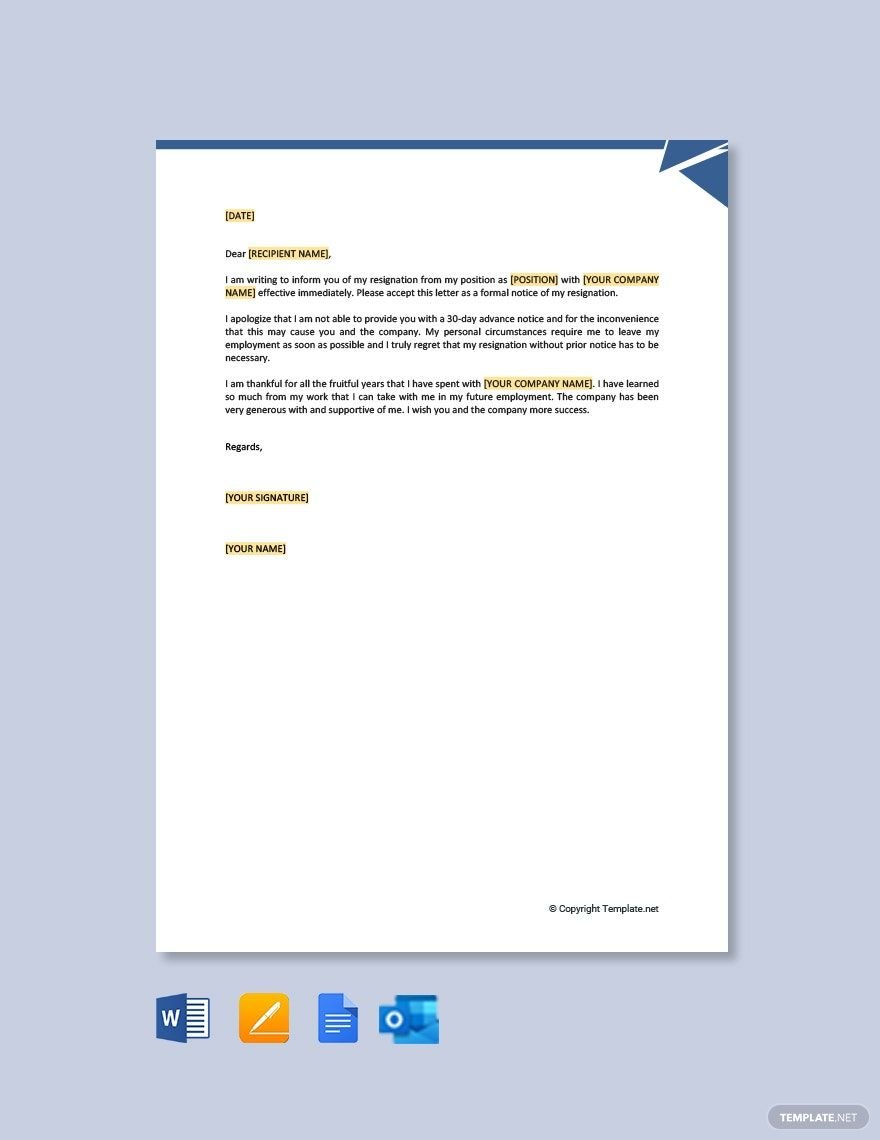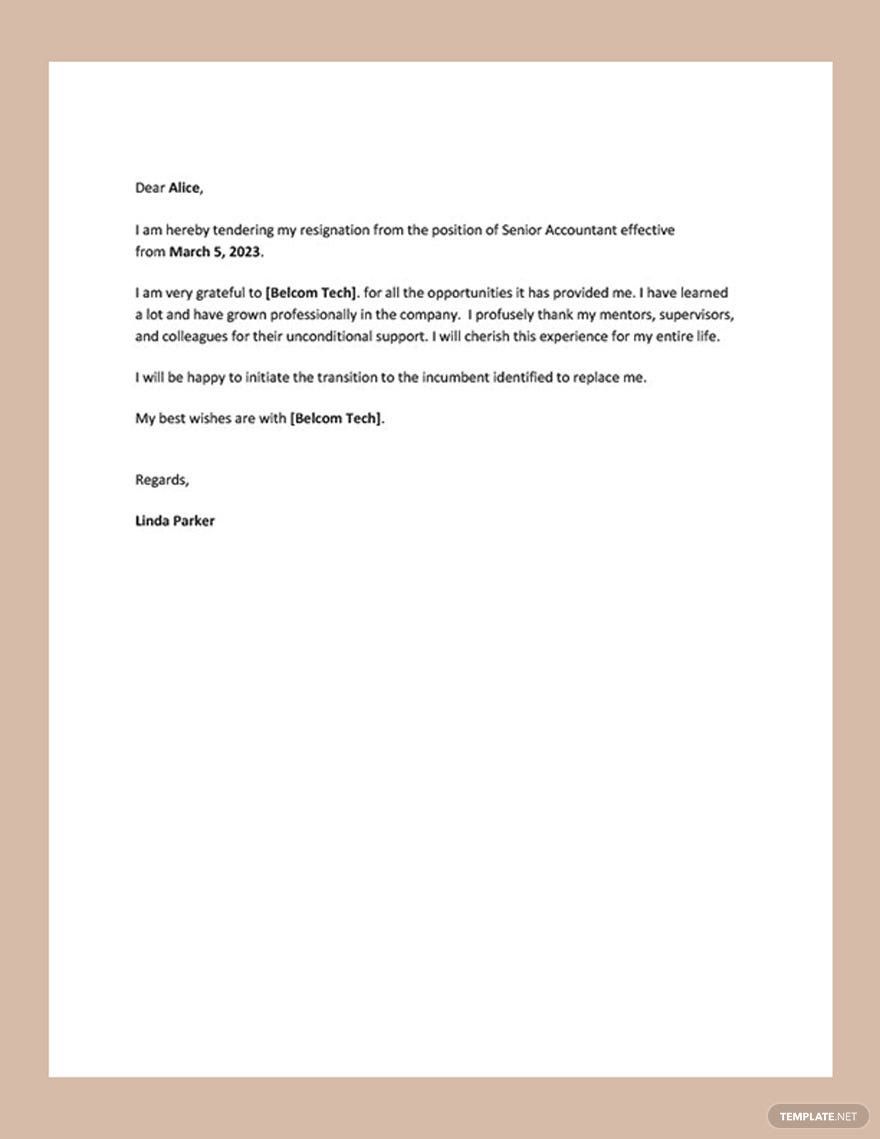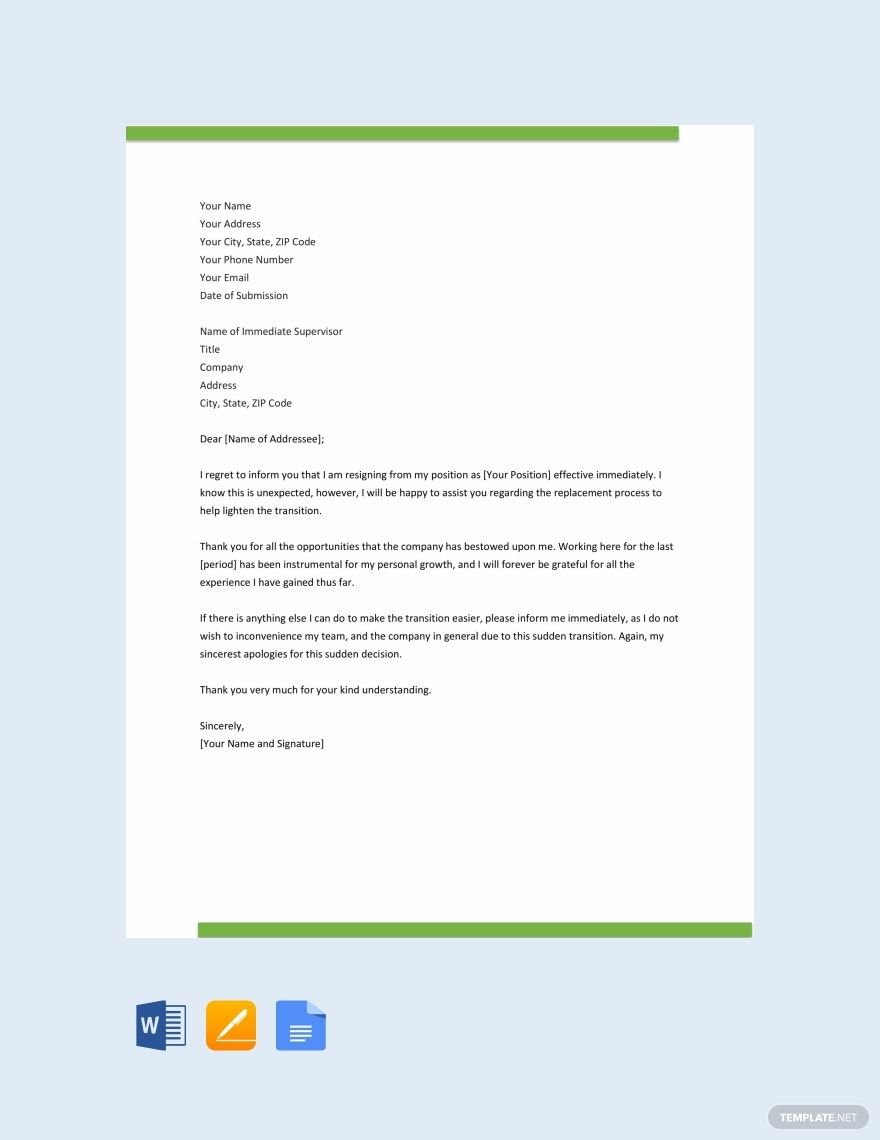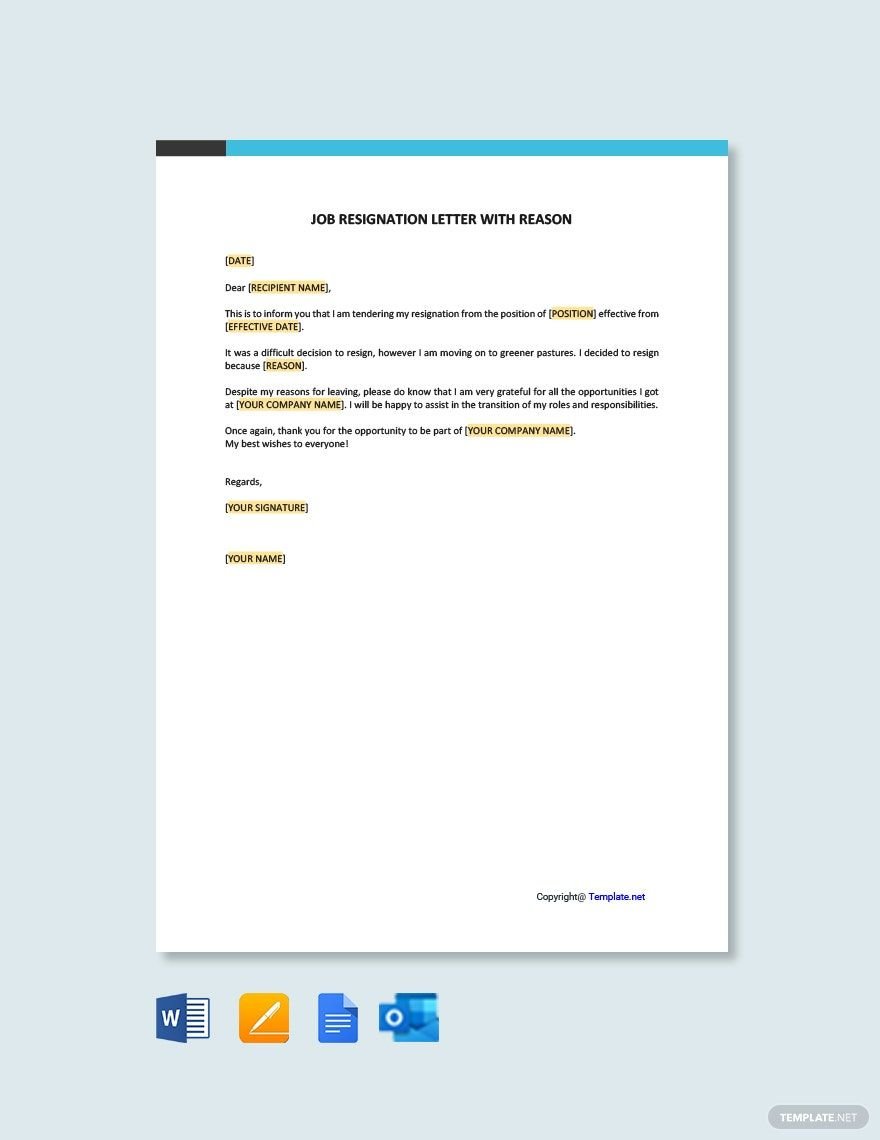We understand that making a resignation letter can be hard at times, which is why this site offers several resignation letter templates to help you get through. Get to draft formal and effective resignation letters that are HR-approved with our 100% customizable, professionally written, and editable resignation letter templates. These high-quality templates are made available in A4 and US letter sizes and are fully compatible with all versions of Google Docs. It is such a great offer served before you. Never waver! Download and subscribe now!
How to Create Resignation Letters in Google Docs
A resignation letter is an official document that records the end of your employment with a company or an organization. Your letter should come right after you indicated your decision via email or in person. According to an article titled "Turnover and Retention: Quick Take," there are roughly 21% of employees cited career development as their reason for leaving since they want to learn, grow, and be challenged. If you're going to leave the company that you are working, you better know how to write a formal resignation letter so that you can have a graceful exit.
Here are some guidelines that you can use in writing a professional resignation letter.
1. Provide Notice
Before filing a resignation letter, you have to give adequate notice to your employer first. Two weeks' notice is the standard practice when resigning from a job; however, if your union agreement or employment contract states how much notice you should give, you should abide by it. Giving notice is a simple courtesy to give your employer enough amount of time to fill your position, especially if your job description is complicated.
2. State Your Reasons for Leaving
Stating your reasons for leaving is optional; it depends upon the degree of seriousness of your reasons. If you are only resigning because you grew tired and unhappy at the company, then you don't have to go into detail about your cause. However, if you are leaving because of personal reasons, family reason, health reason, retirement, or you have accepted an offer at a different company for career growth, then you better mention it in your letter to give your employer a better sense of the situation.
3. Offer to Assist with the Transition
Writing a formal resignation letter will also help in the transition, whether it be recruiting or training the new employee in place for your position. When your work position is quite complicated and challenging to fill, then you can state in your sample letter your willingness to train someone else to pass on your duties smoothly. By doing so, both parties can have the closure that they deserve, as well as the sense of amicability and respect.
4. Thank Your Employer
In the body of the letter, you can mention how grateful you are to be part of your team so you can maintain a positive and graceful exit in the company. Thank your employer by stating how your job positively influenced and helped you grow in your career path to help you secure an even better position. You can also thank your boss by highlighting some experiences and opportunities such as receiving certificates from various training programs that you can utilize in the future.
5. Have a Nice Closing
Your resignation letter is not the right avenue for critiques and complaints of the employer, coworkers, or anything that concerns the company. If you have an issue with the management, you better not divulge it in your letter; take note that you're not writing a complaint letter. As much as possible, you have to maintain your friendly tone from the beginning until the end of the letter. Close it nicely by saying, "Wishing you the best," "Kind regards," or "Sincerely," right before you write your name and affix your signature. Use your closing remarks as your opportunity to show how grateful you are for the experience that you had at the company. Once you have finished your letter, you can save it on your device or Google Docs so you can access the letter anytime on any device.



